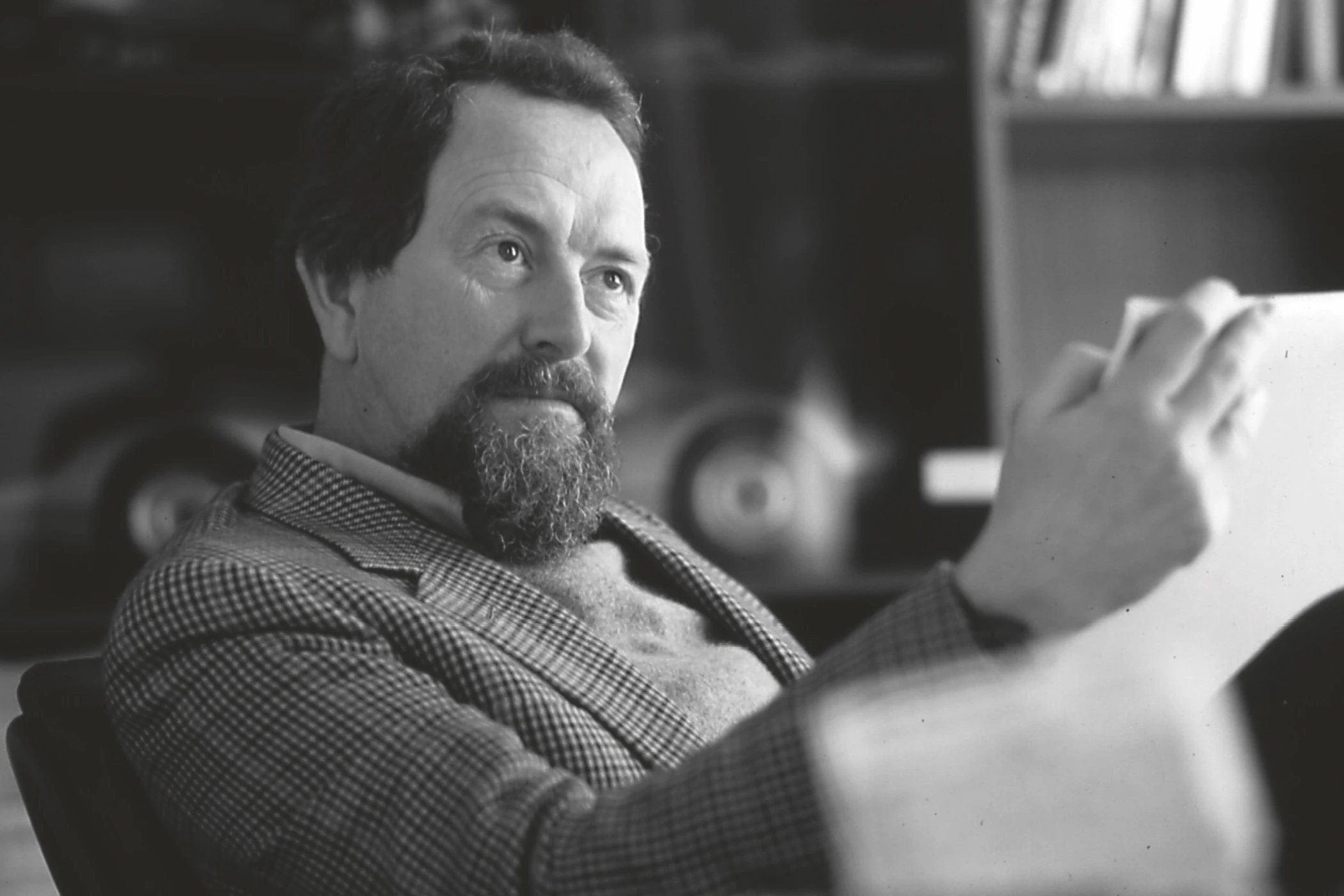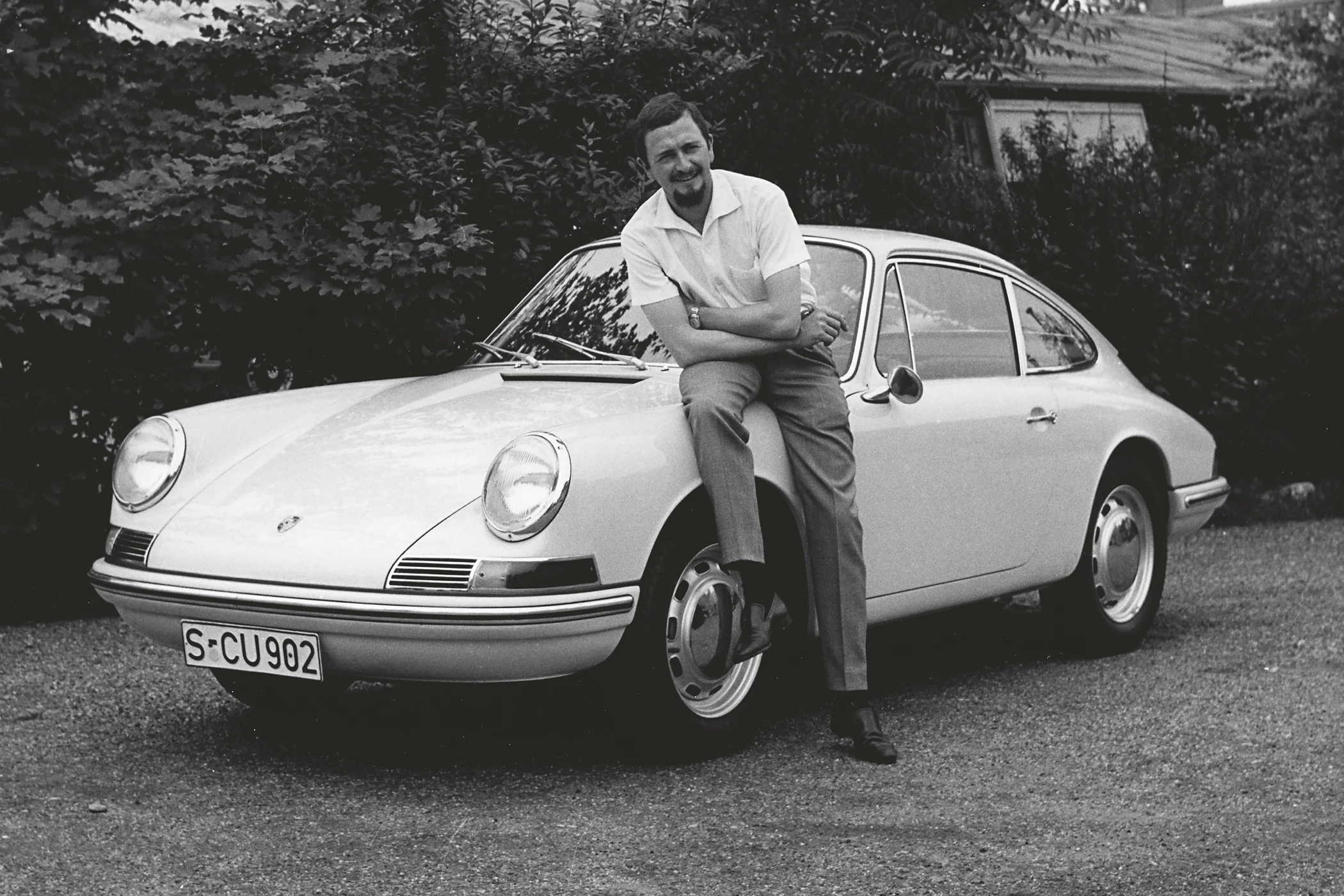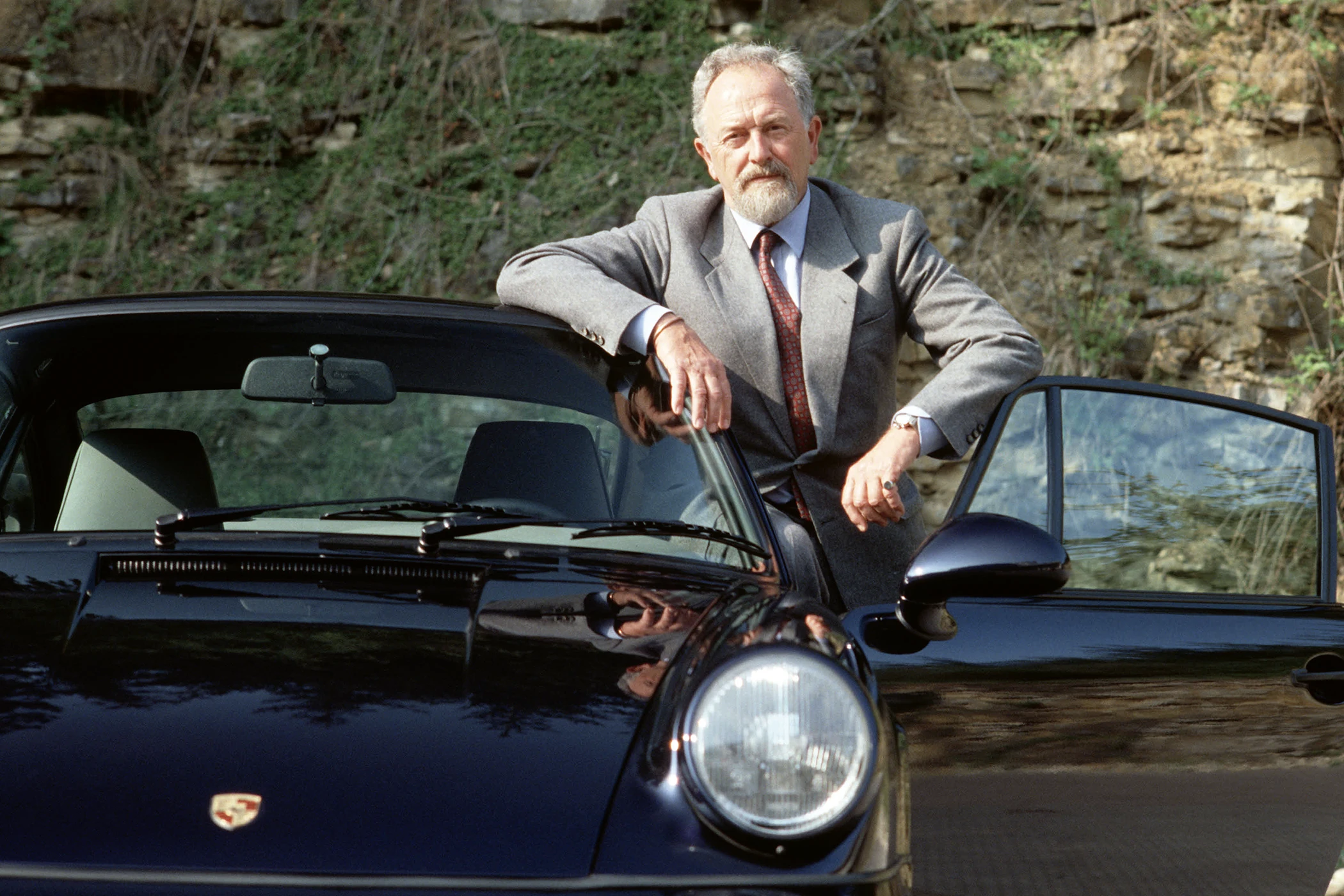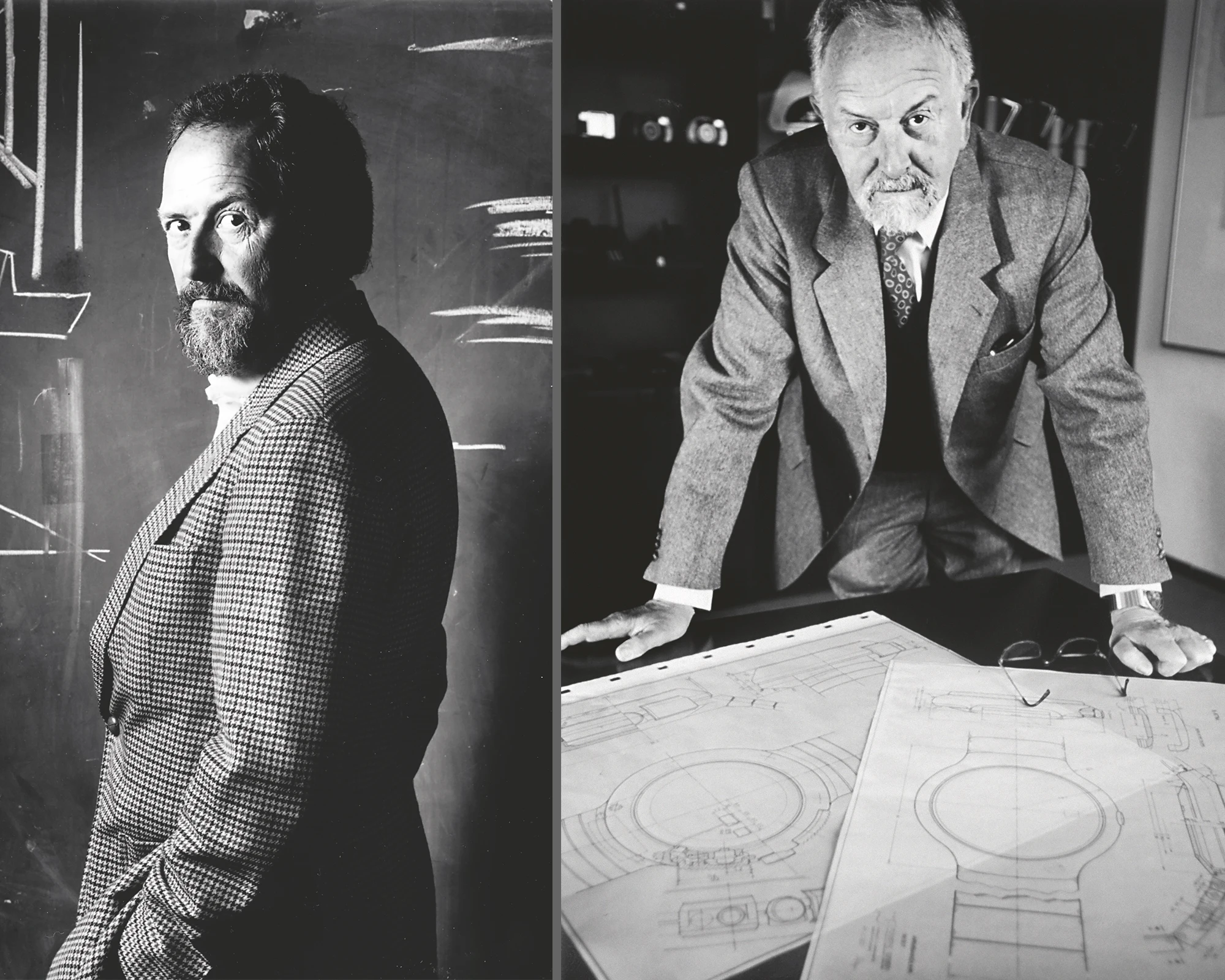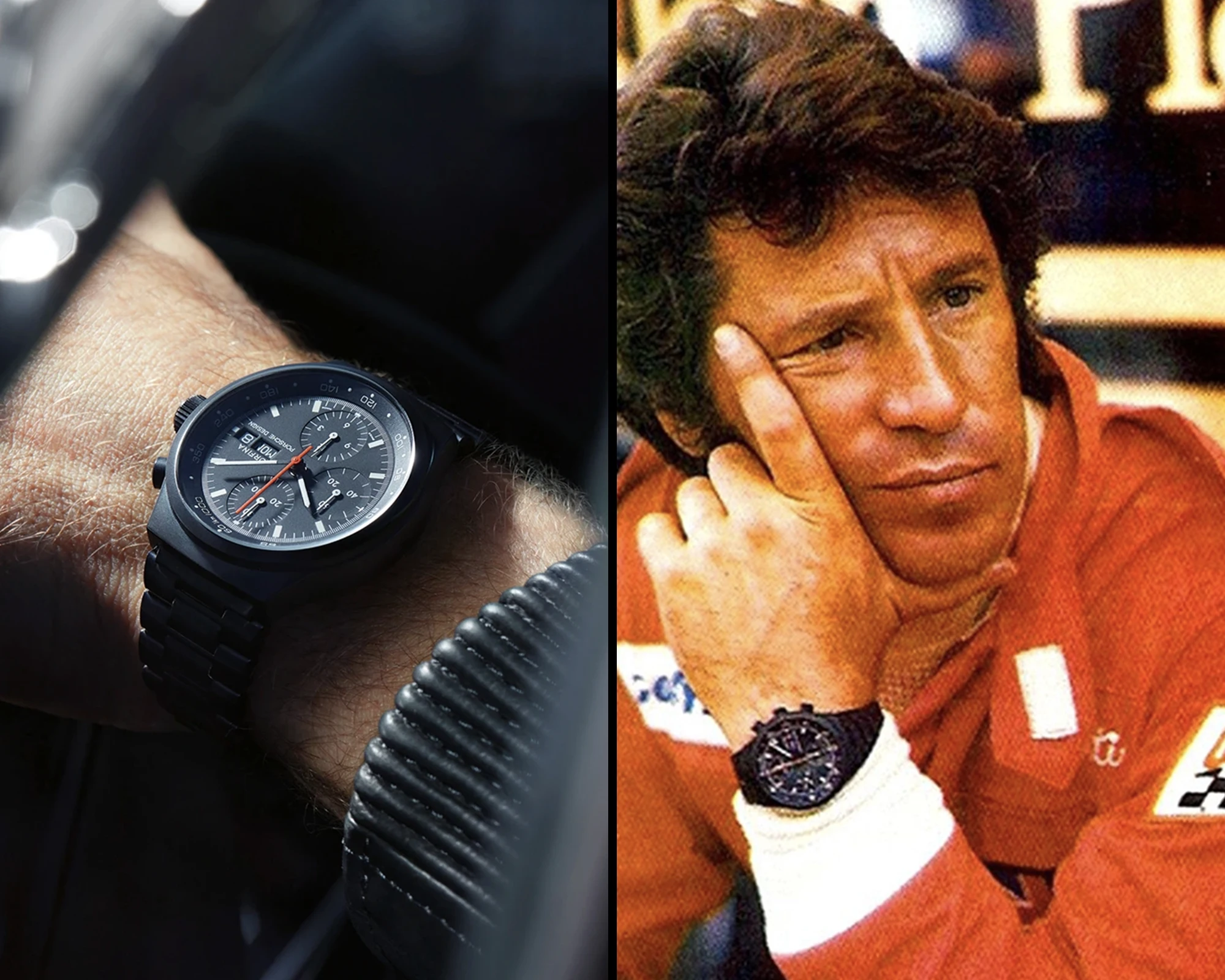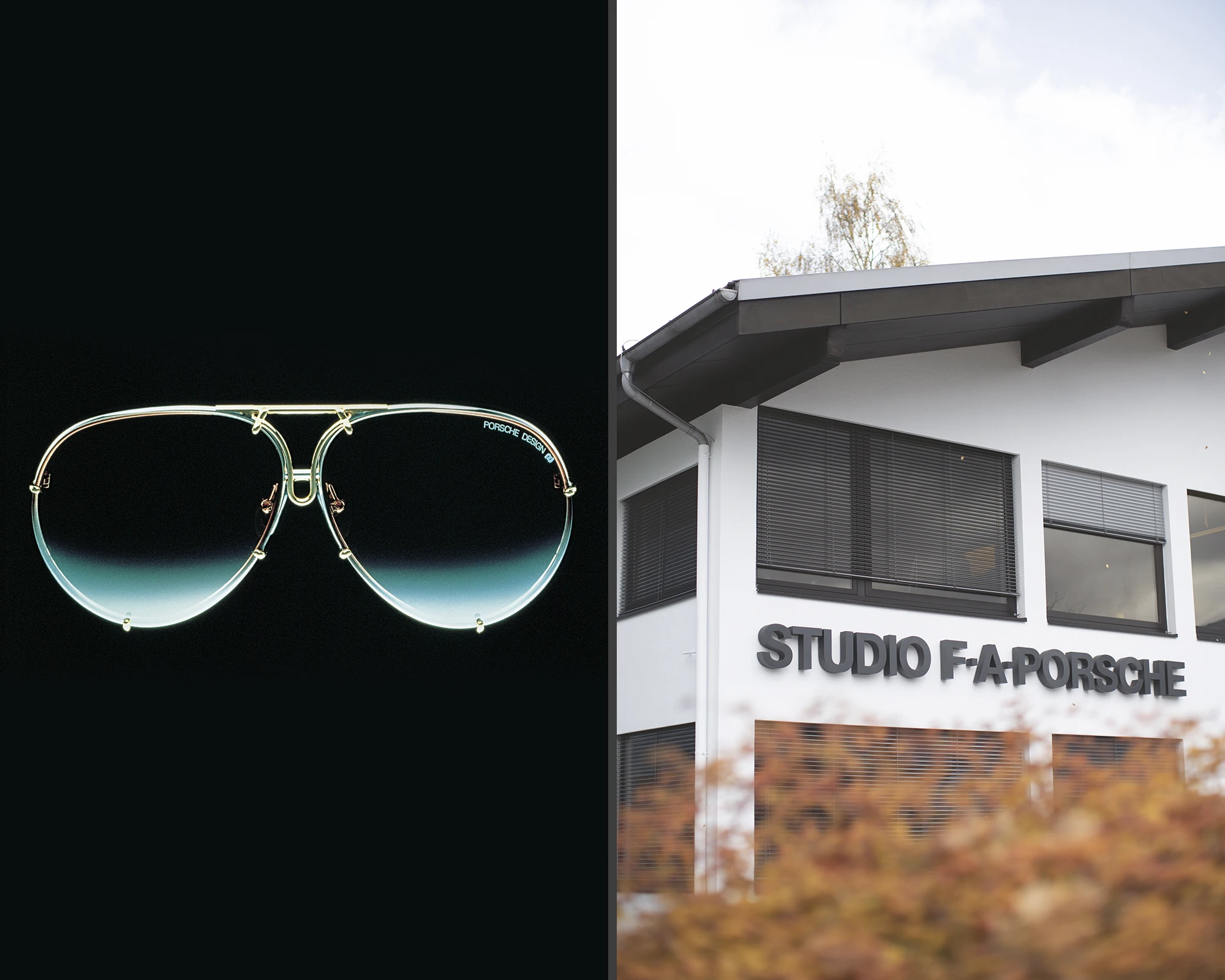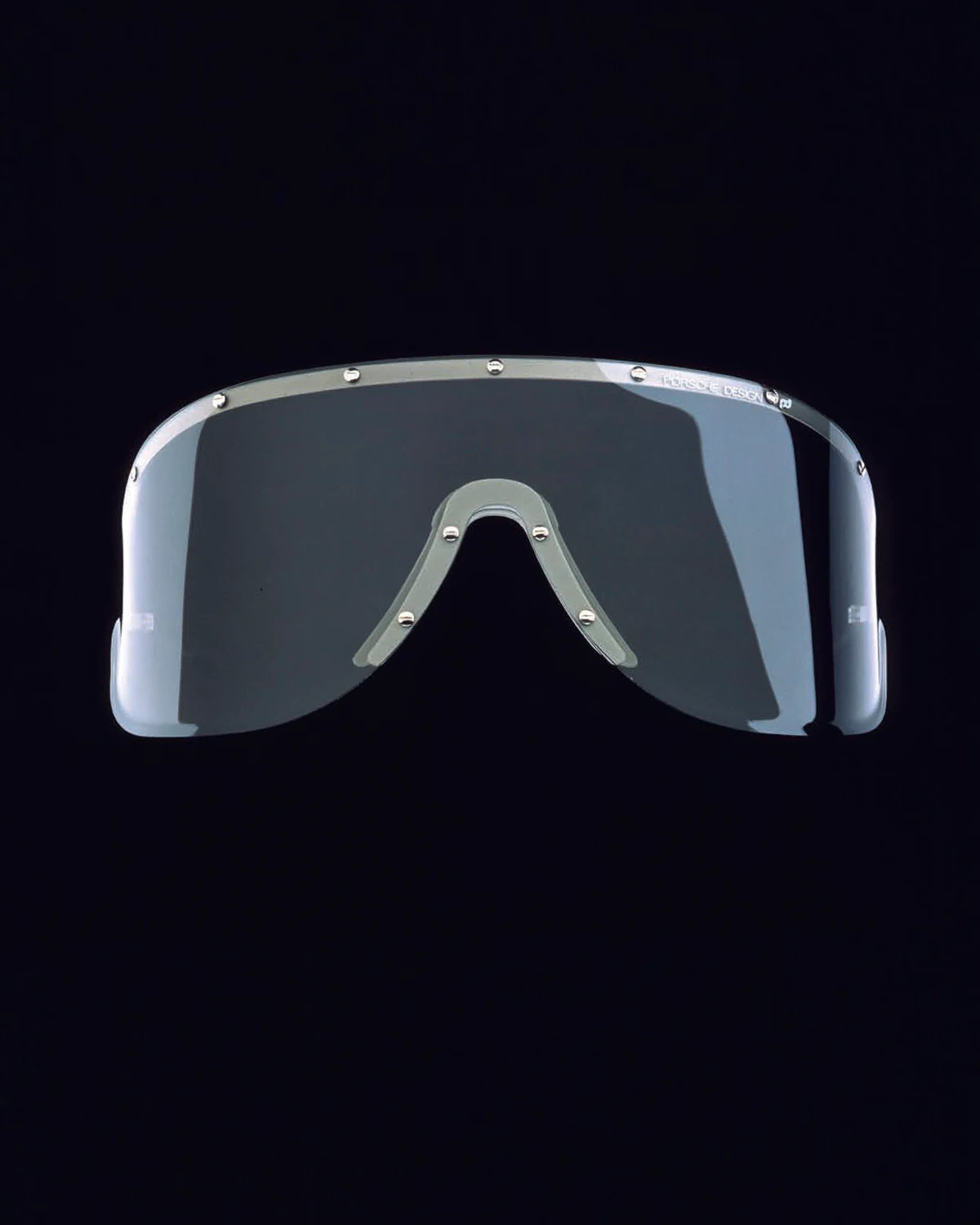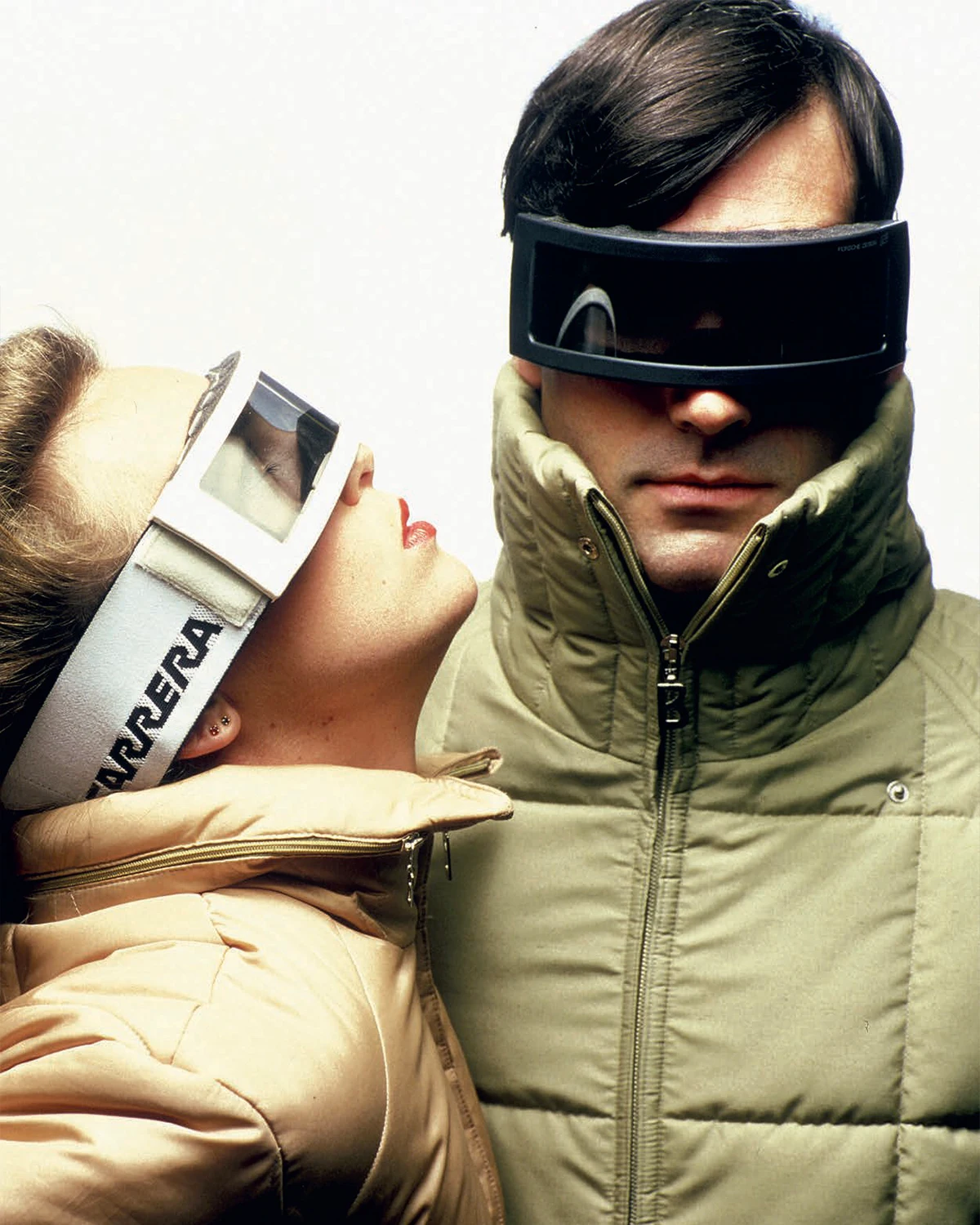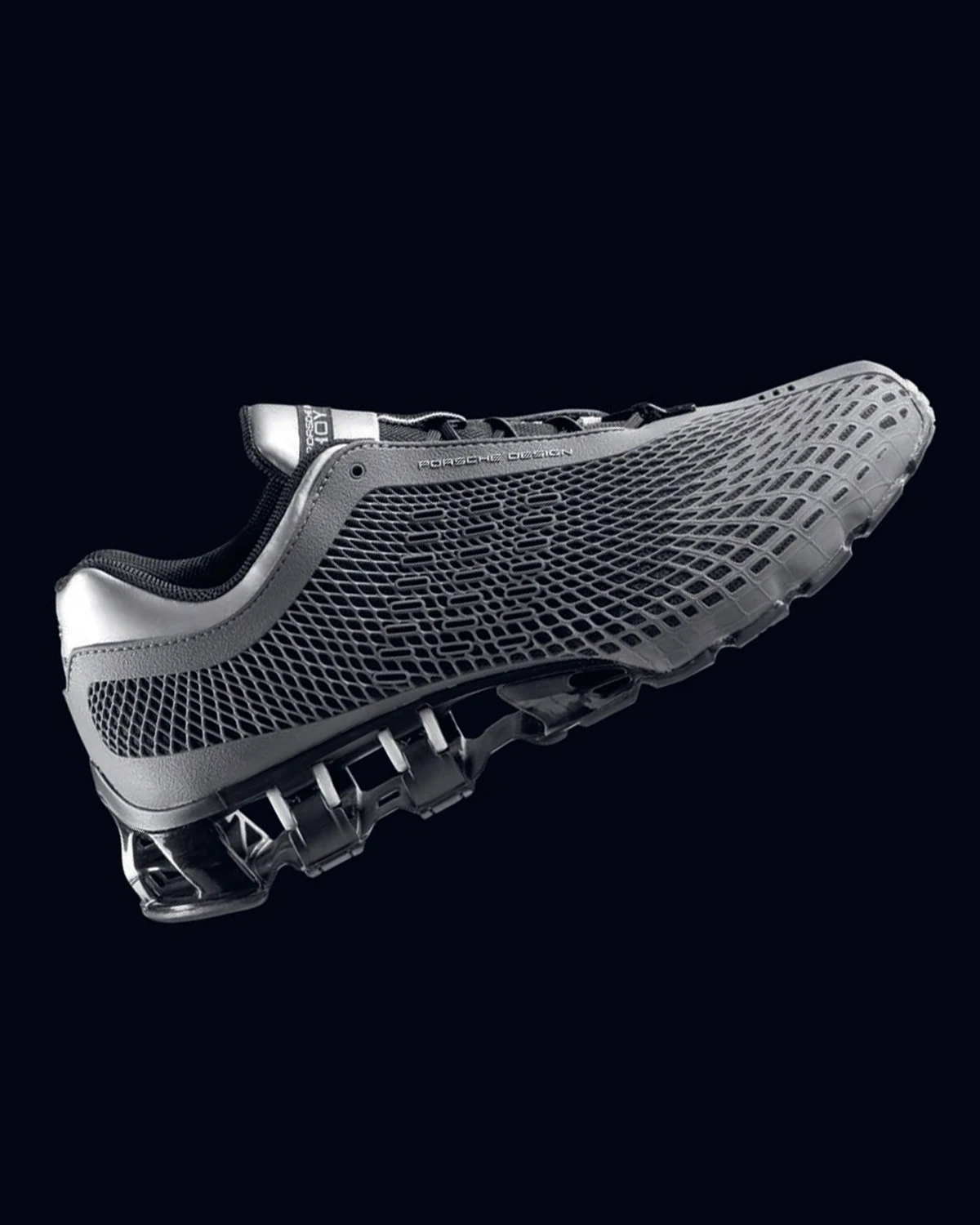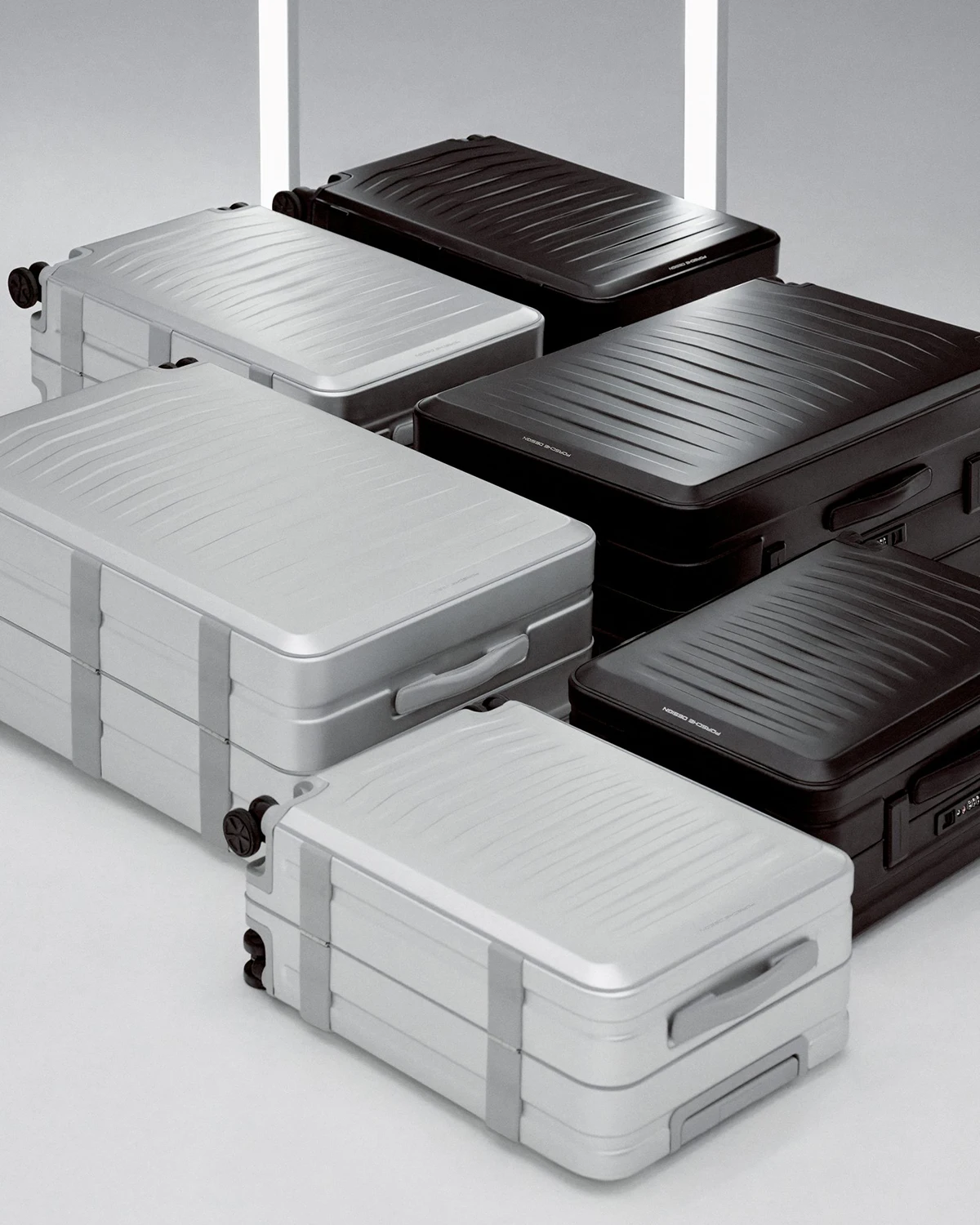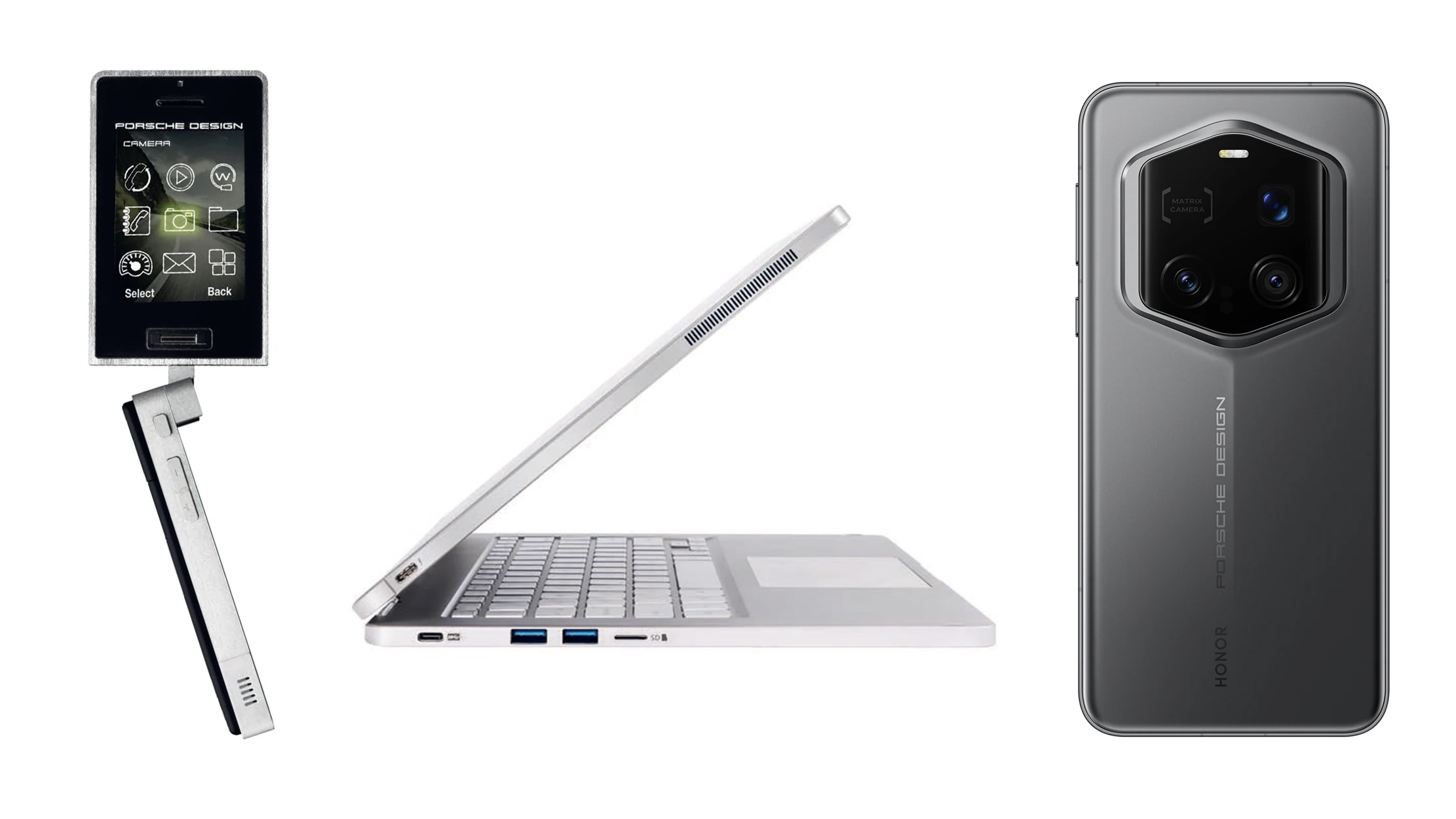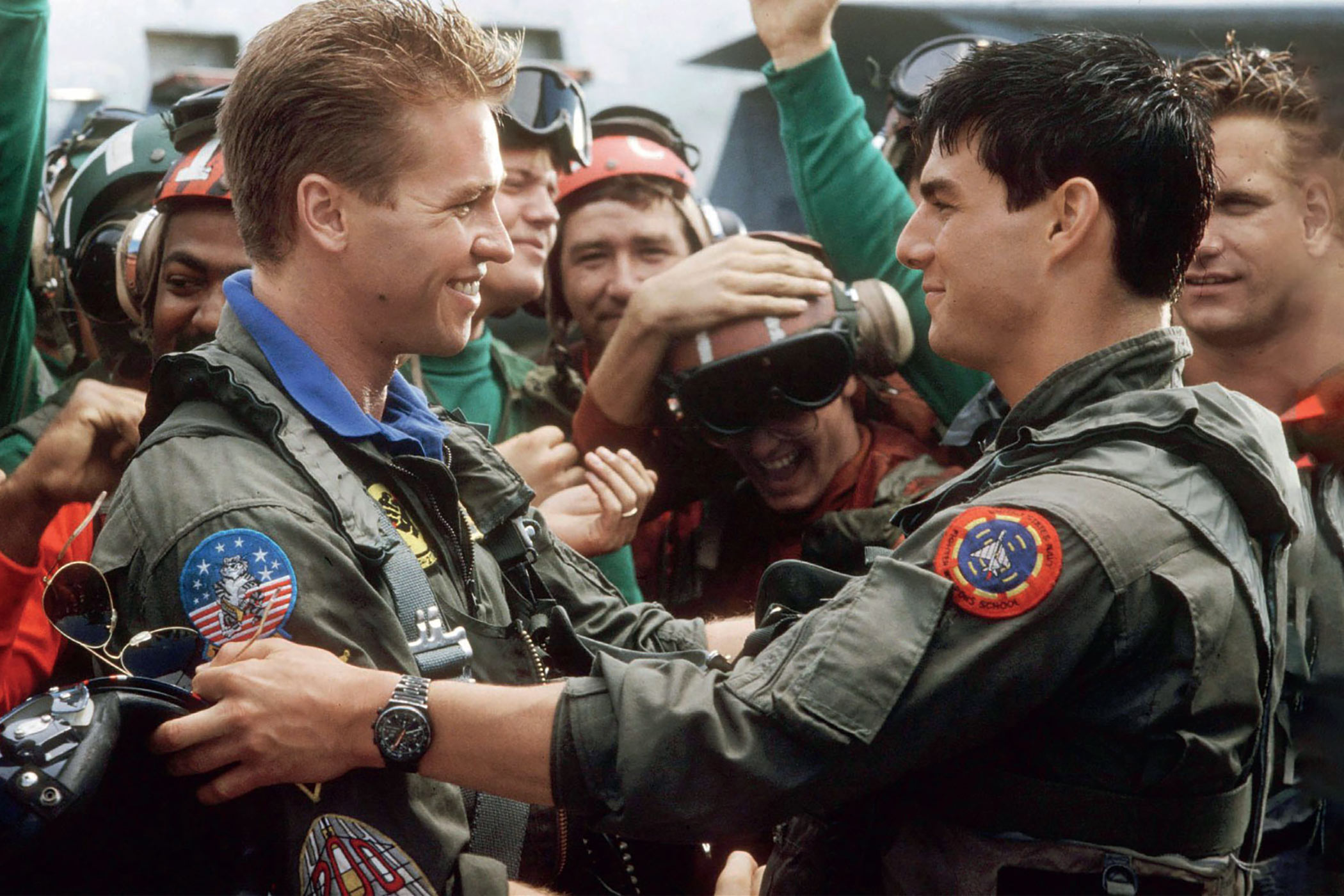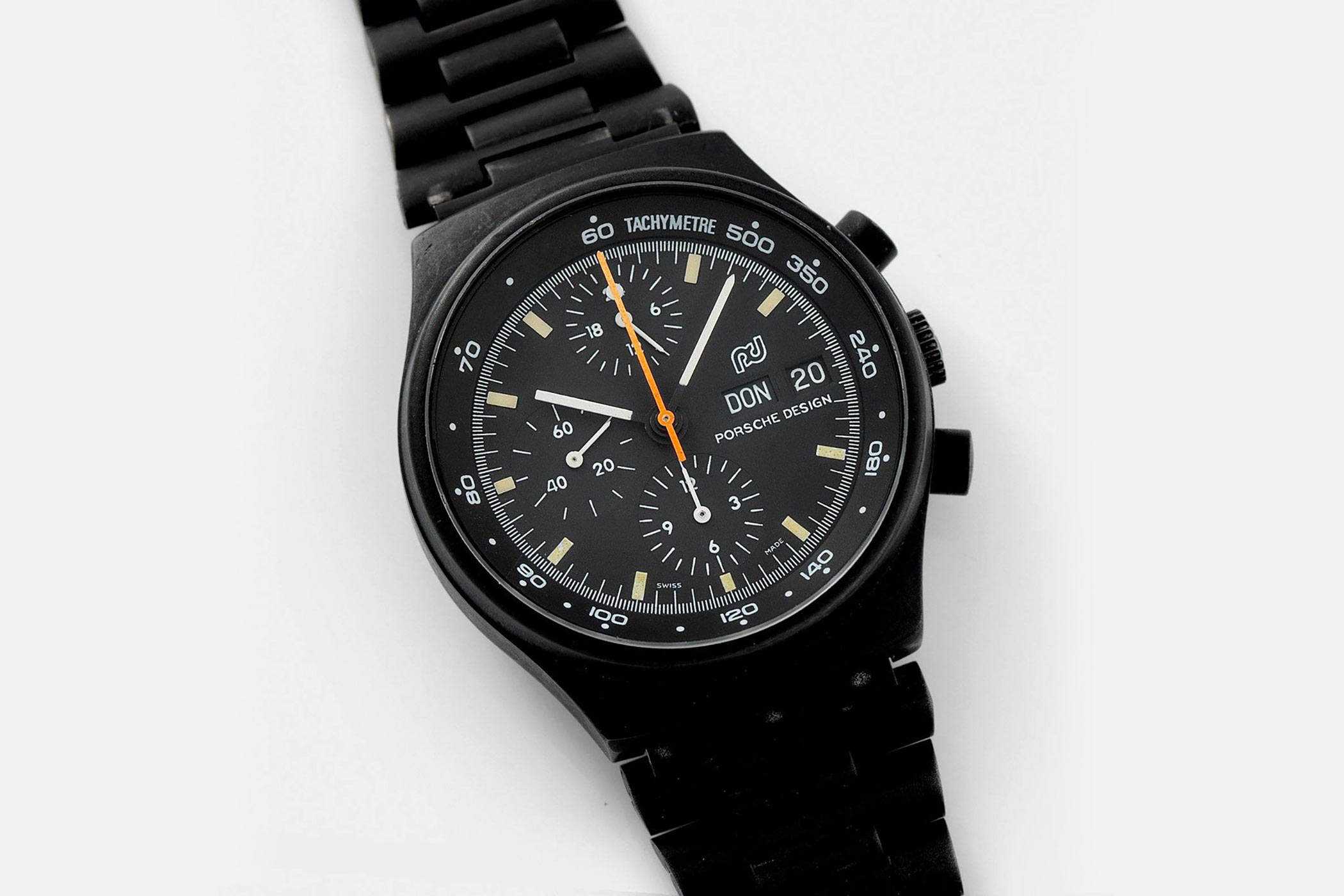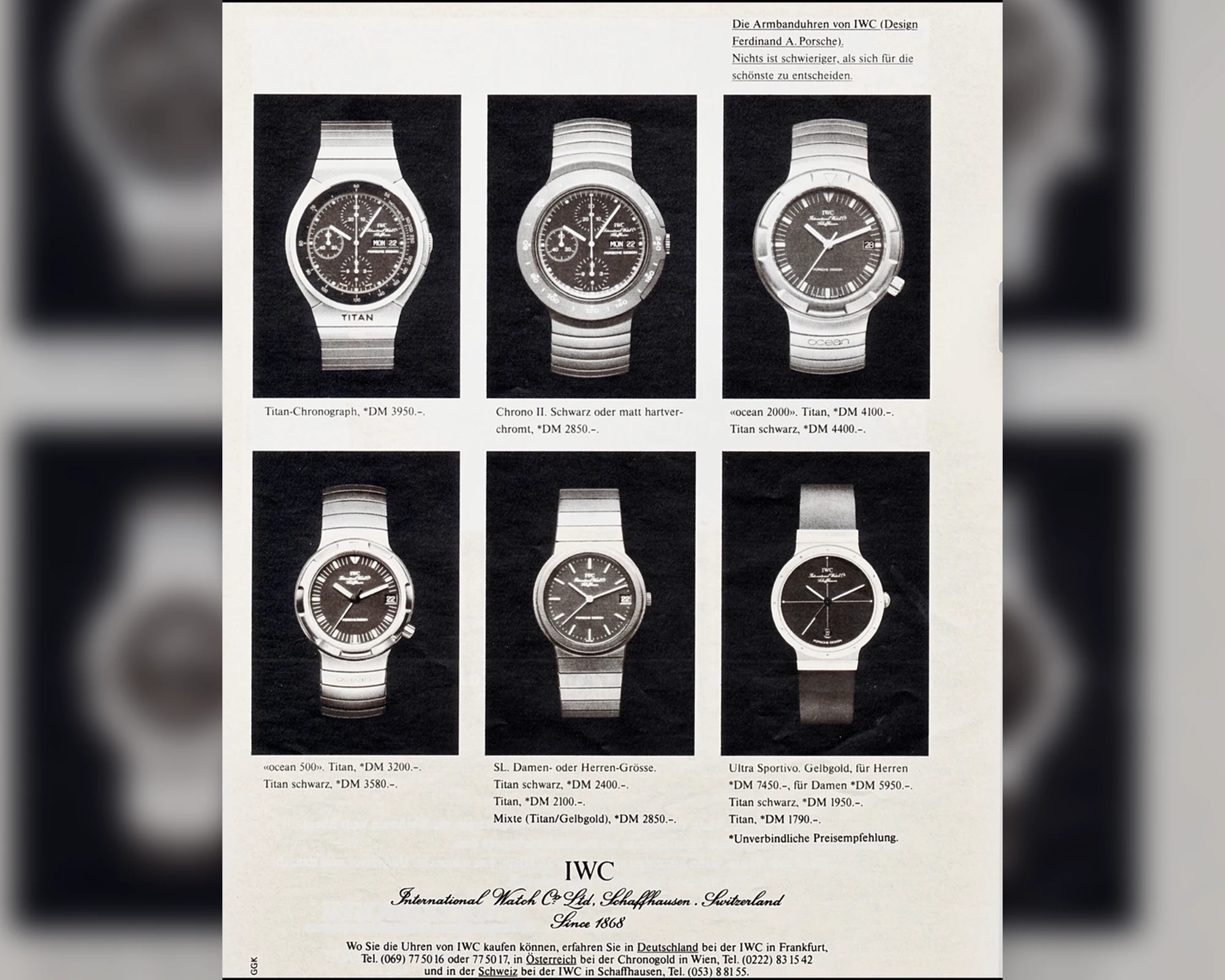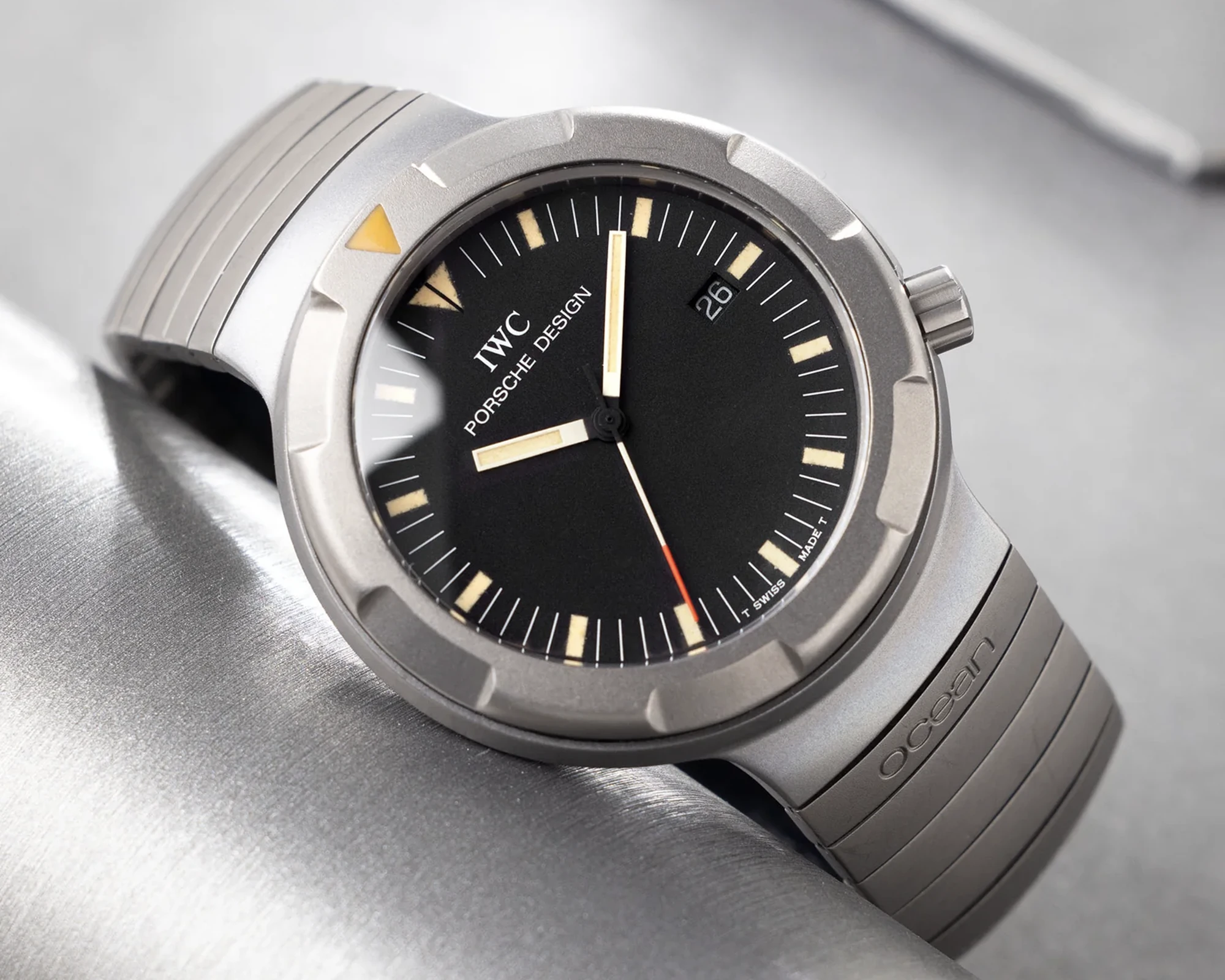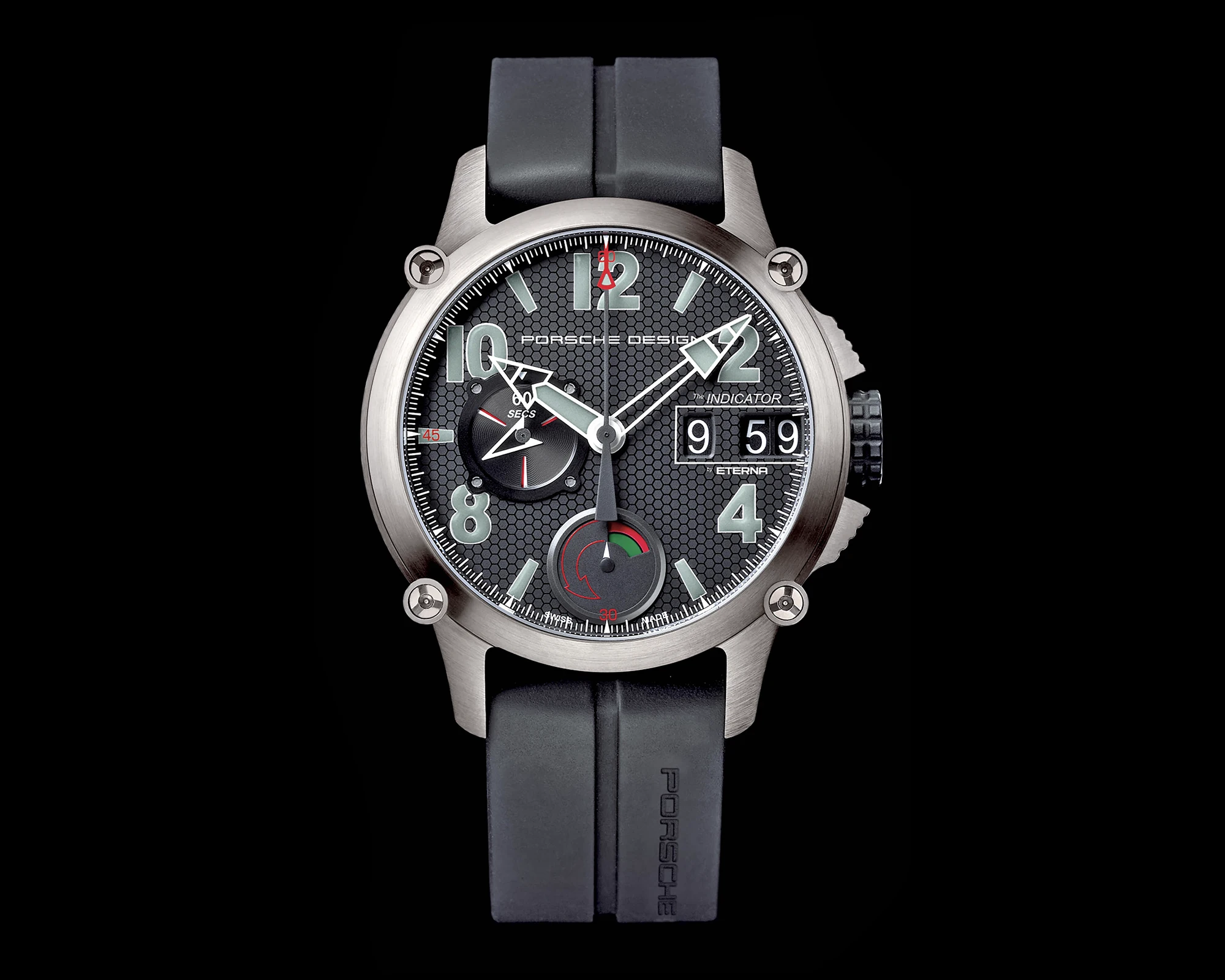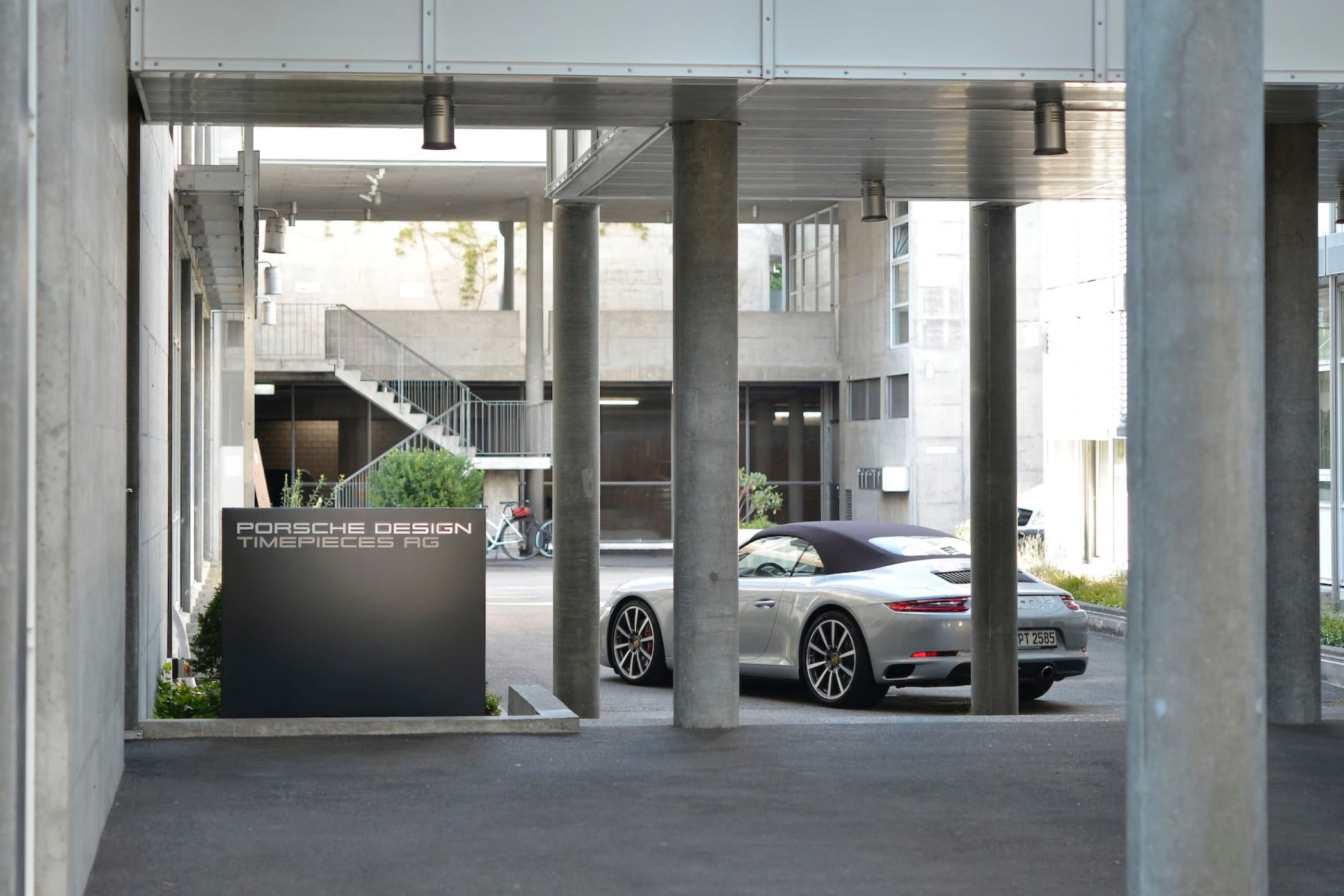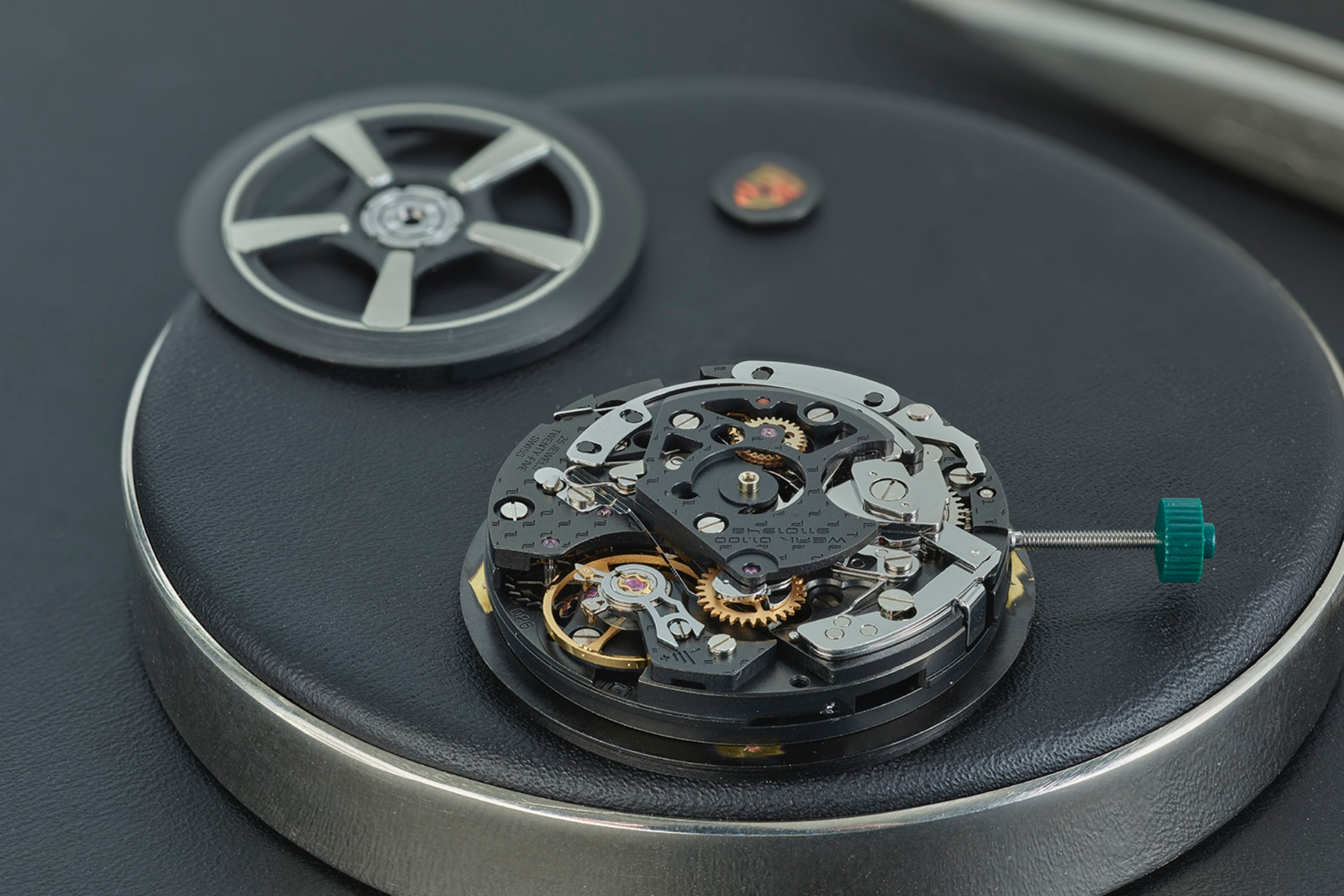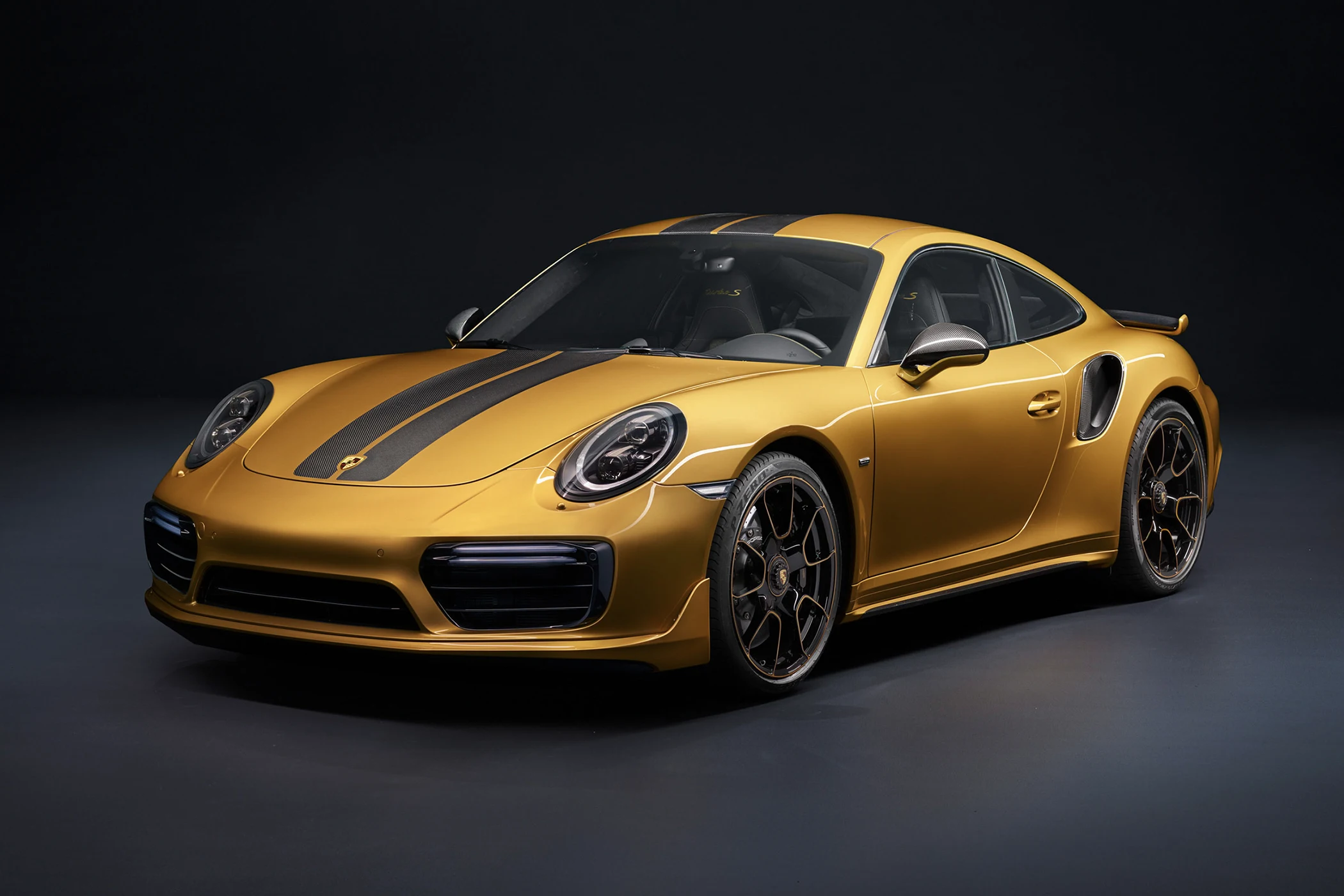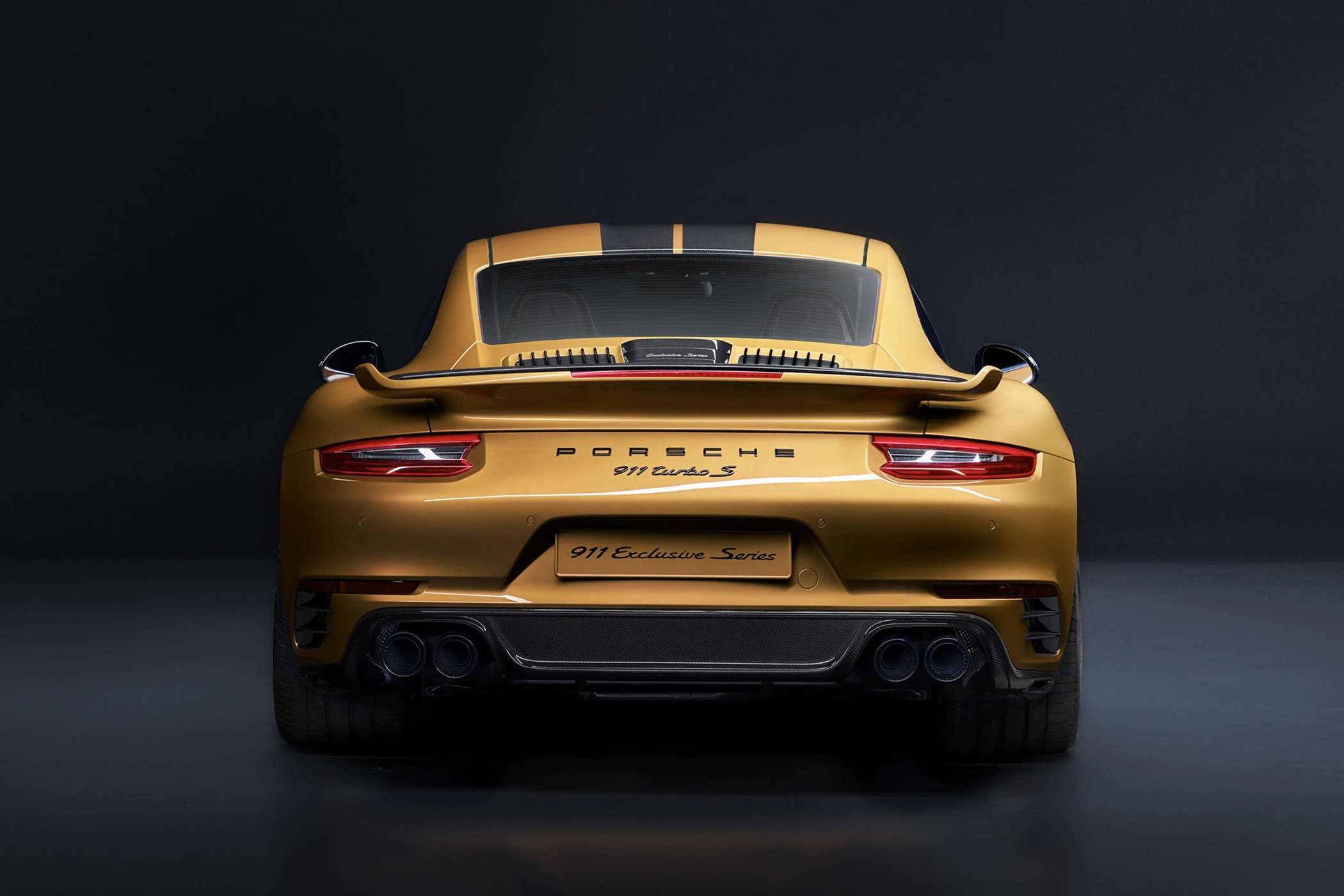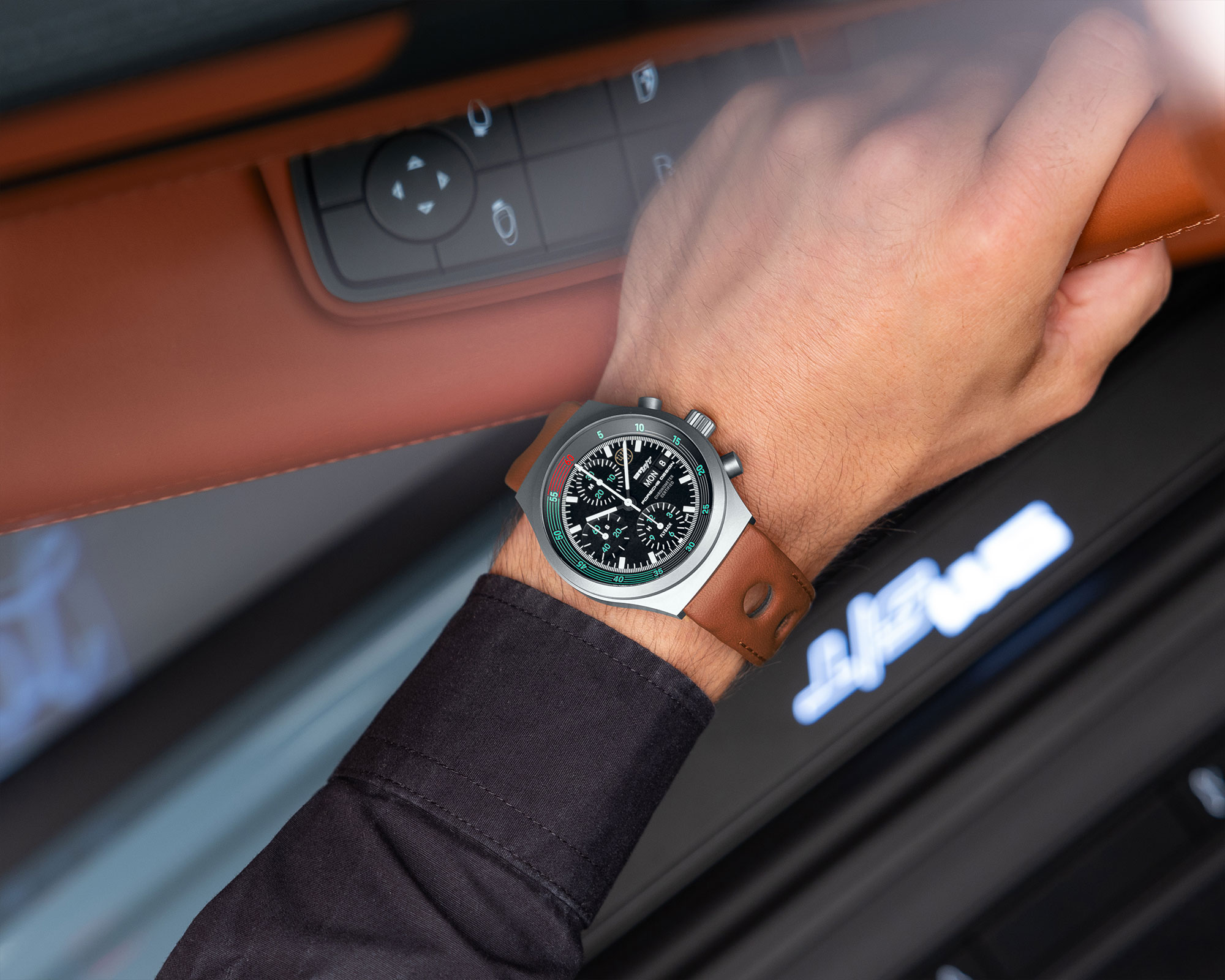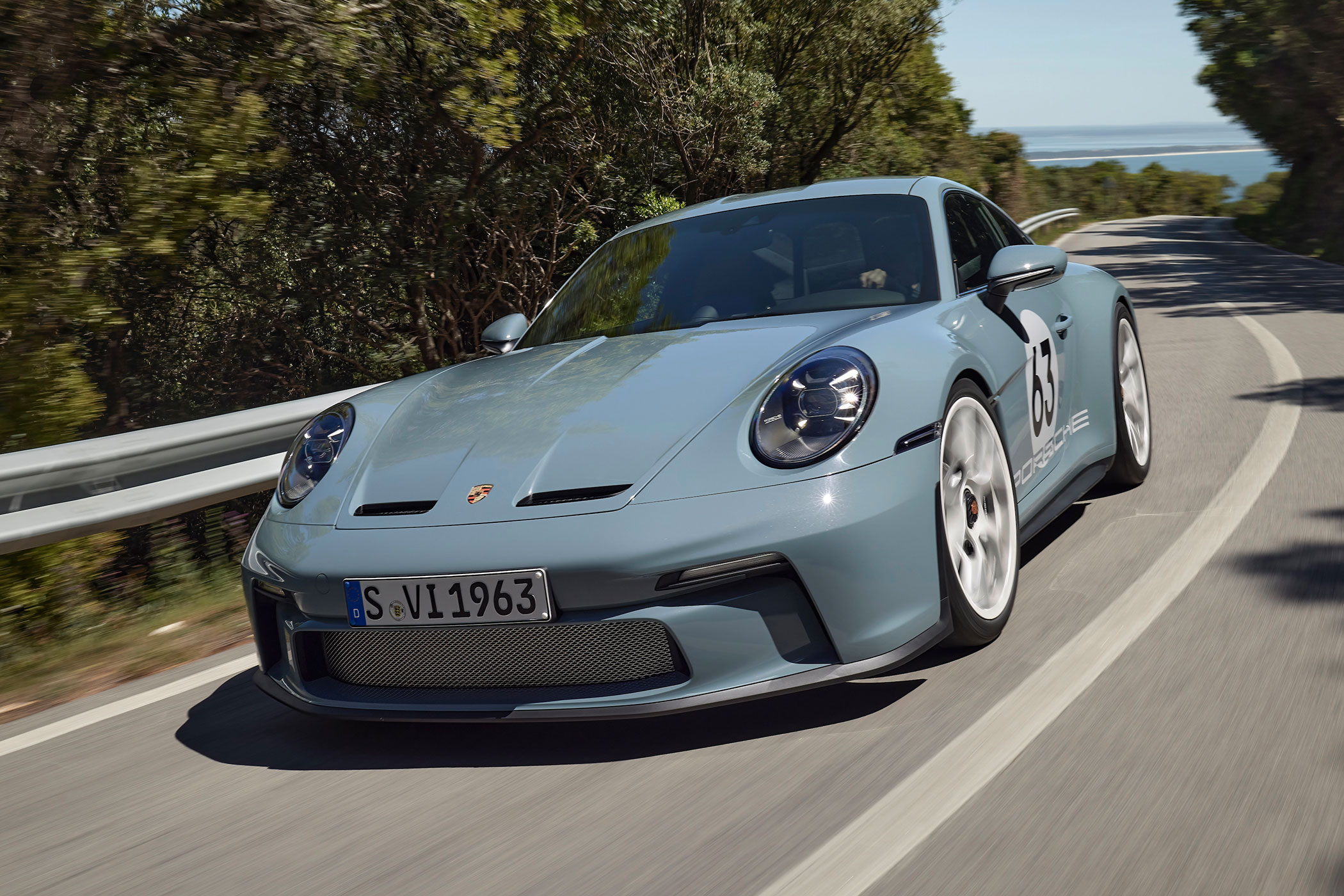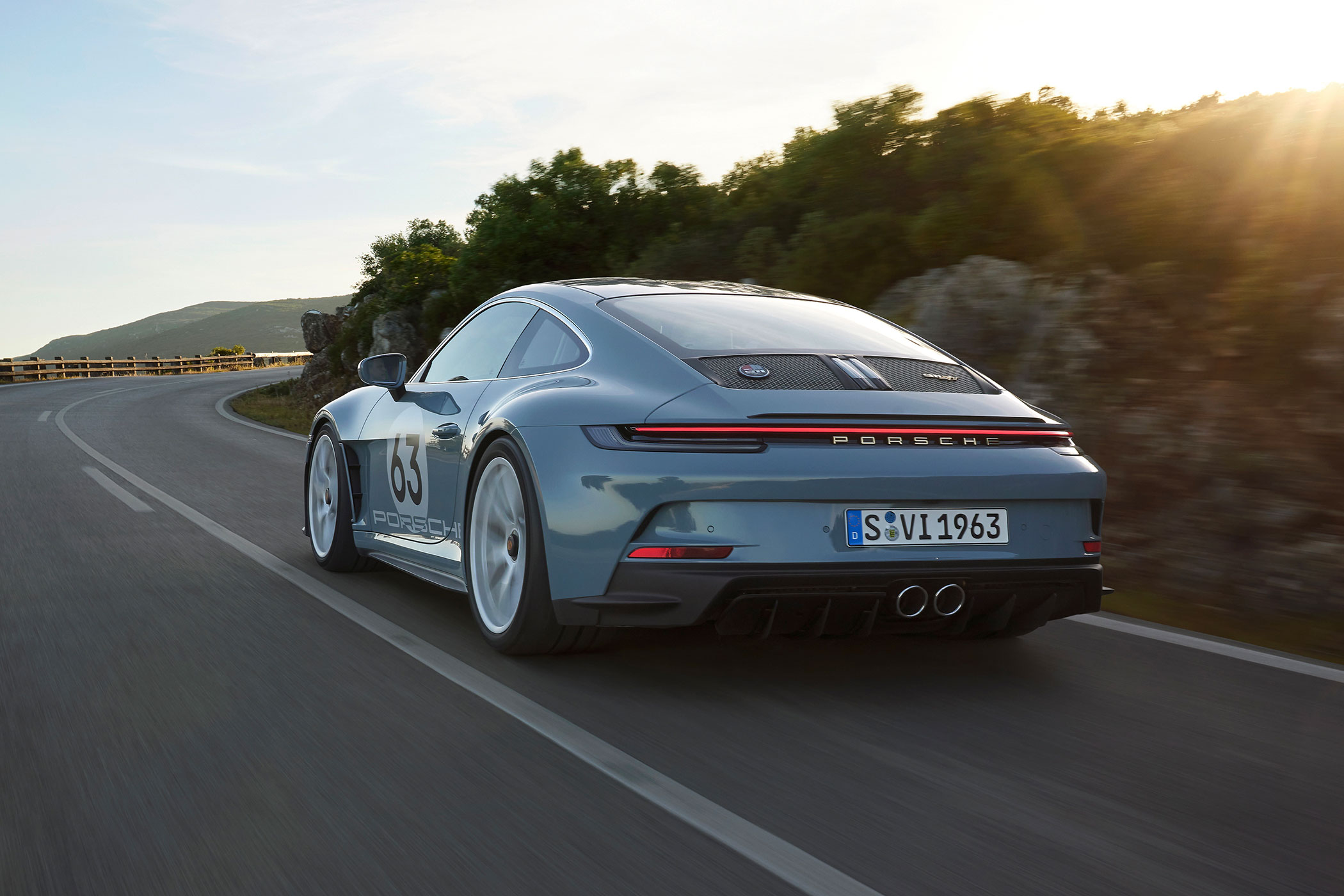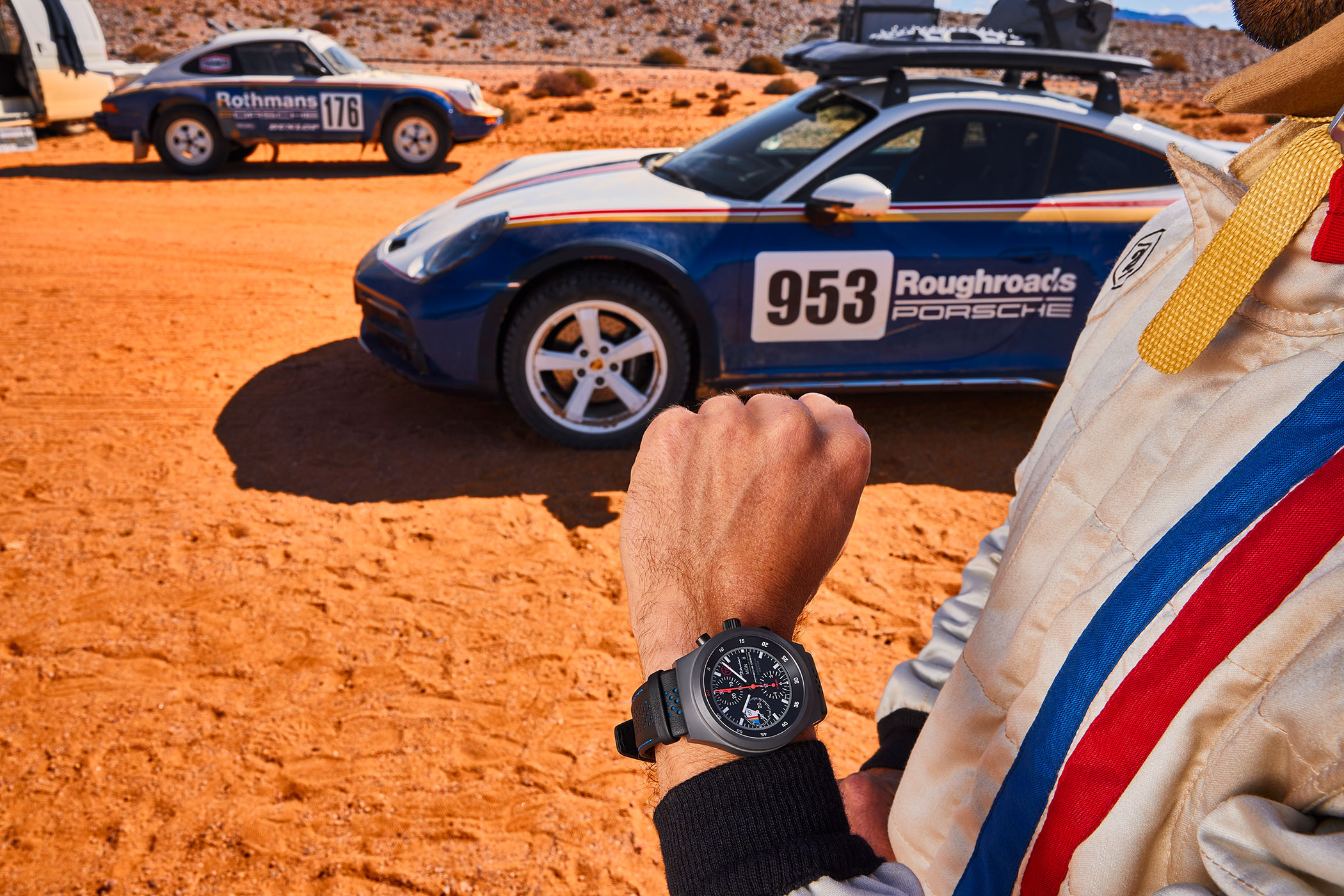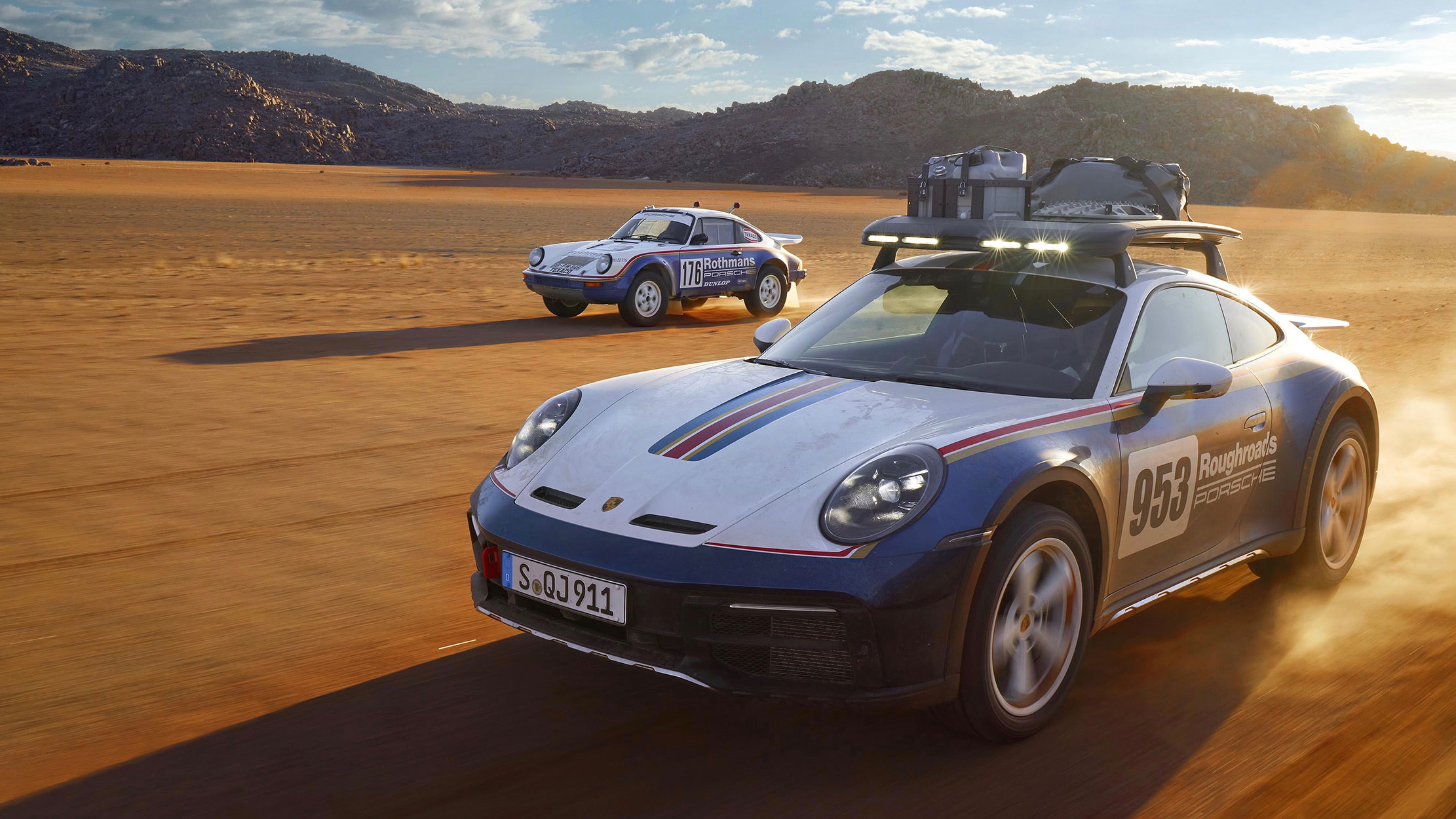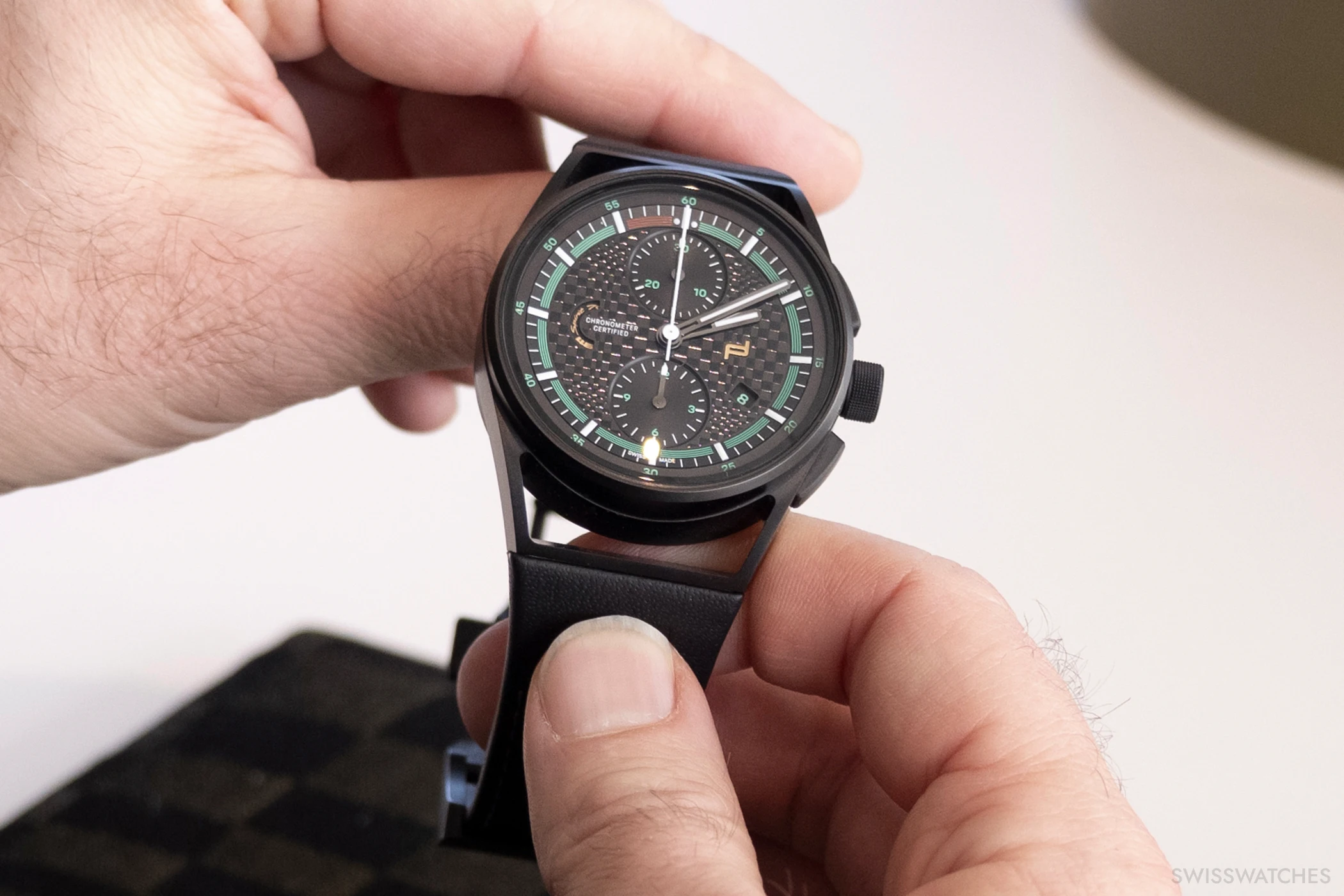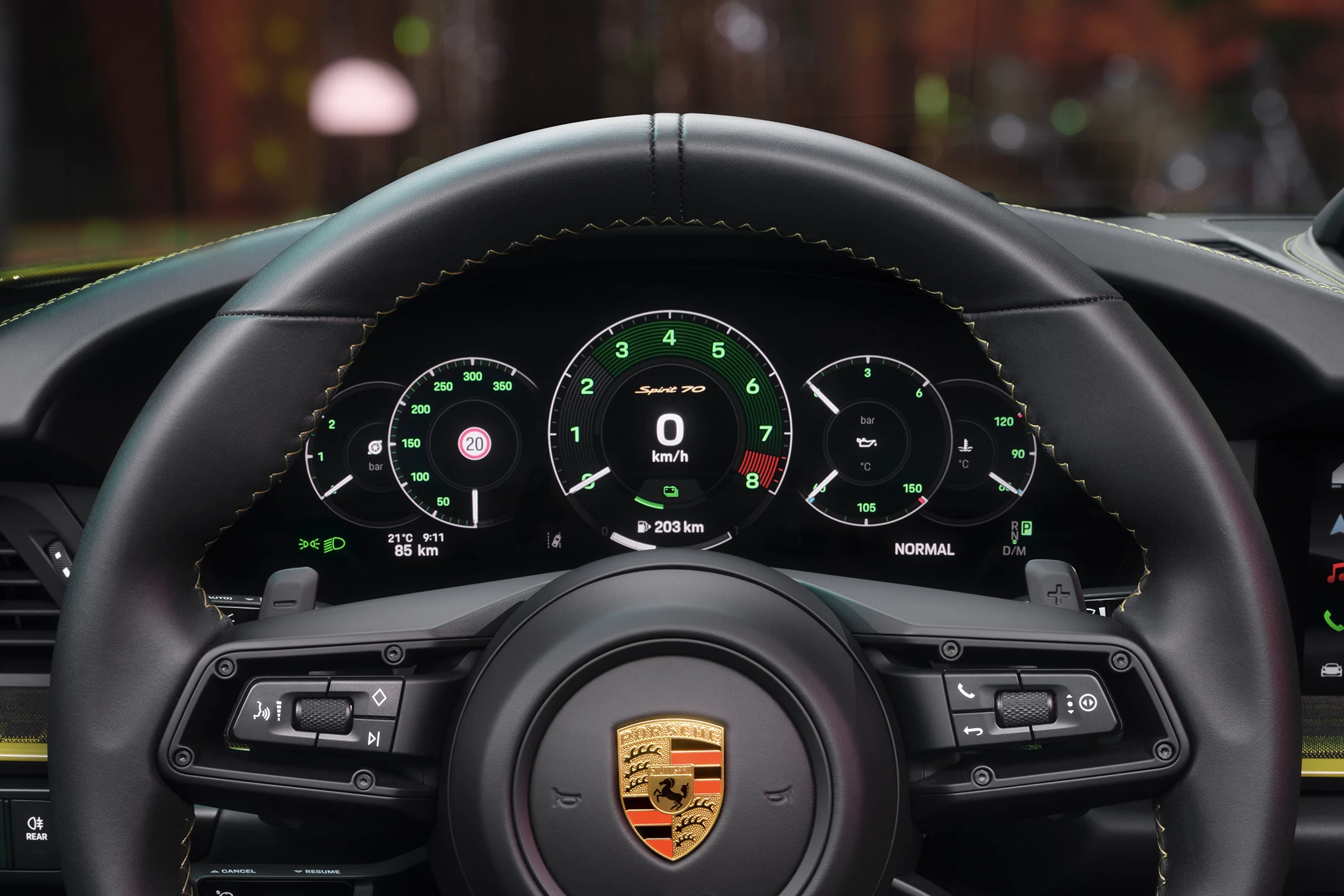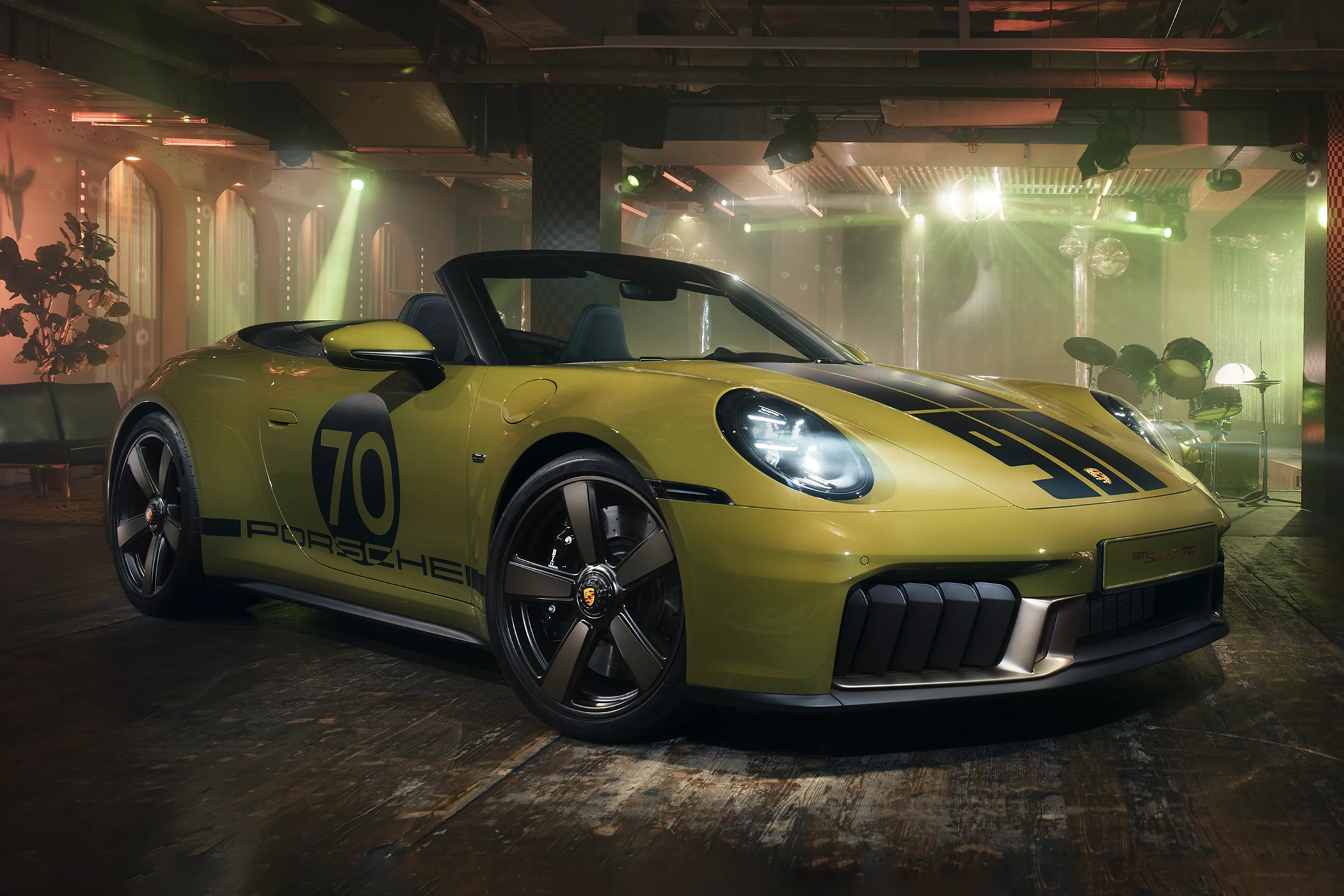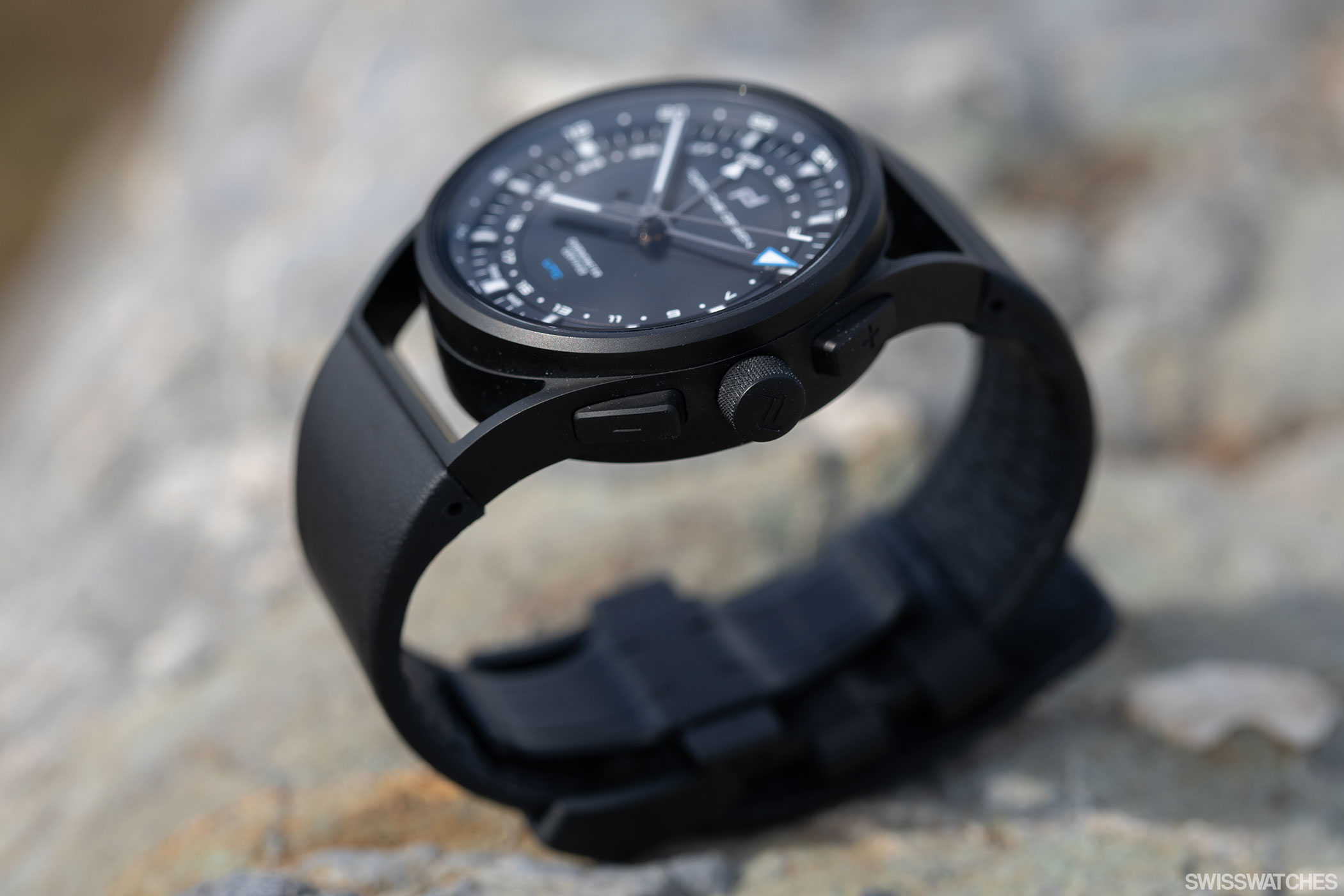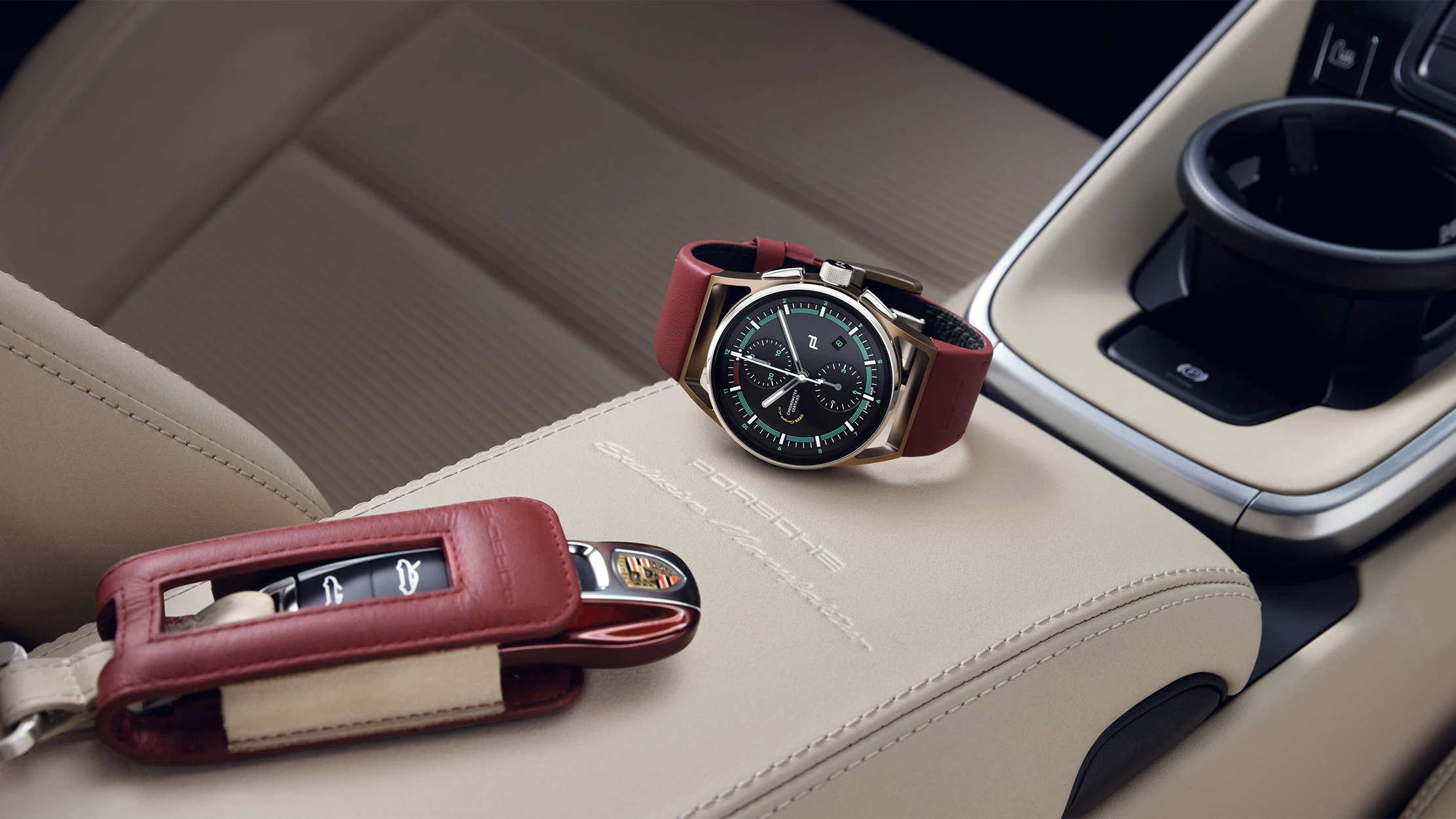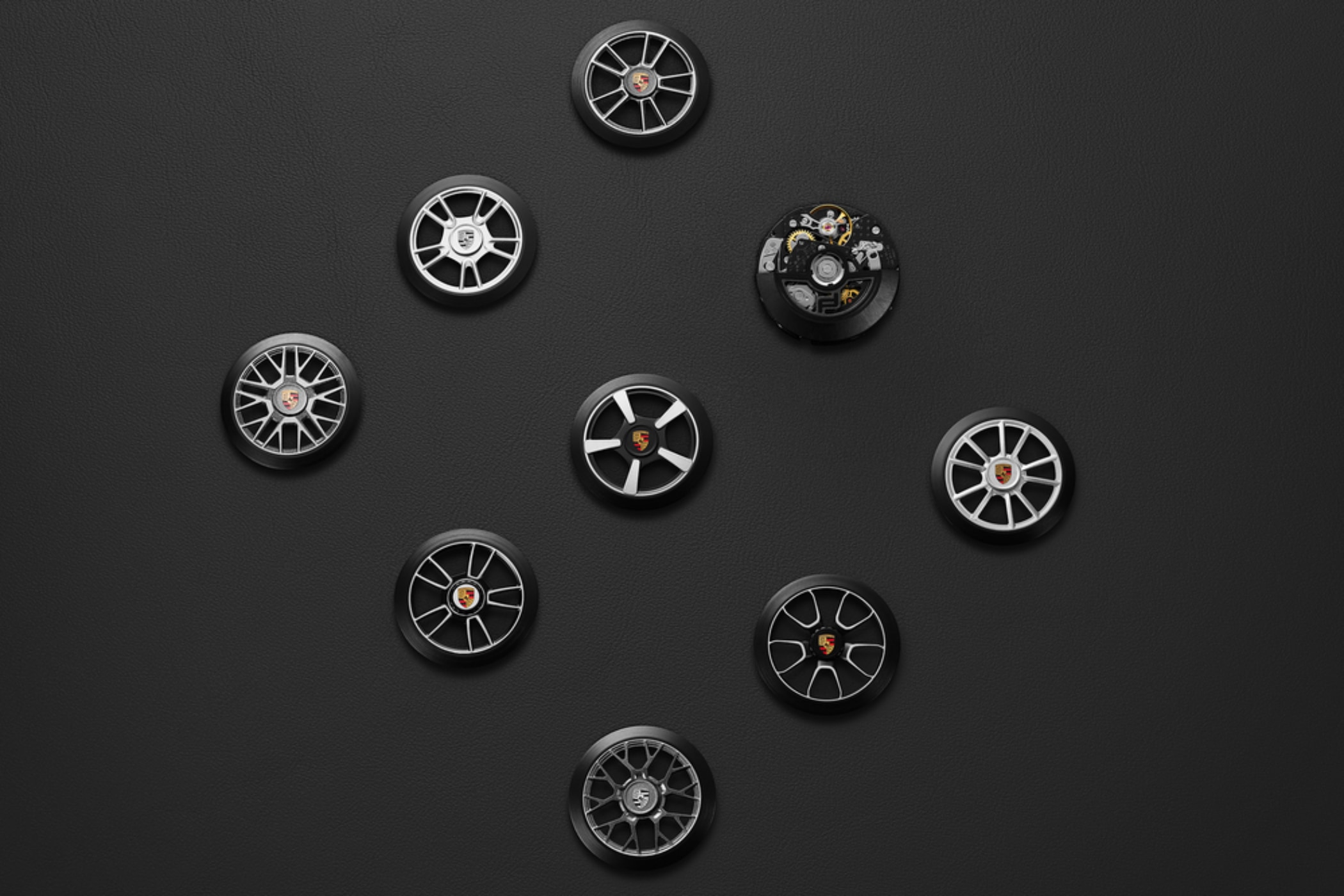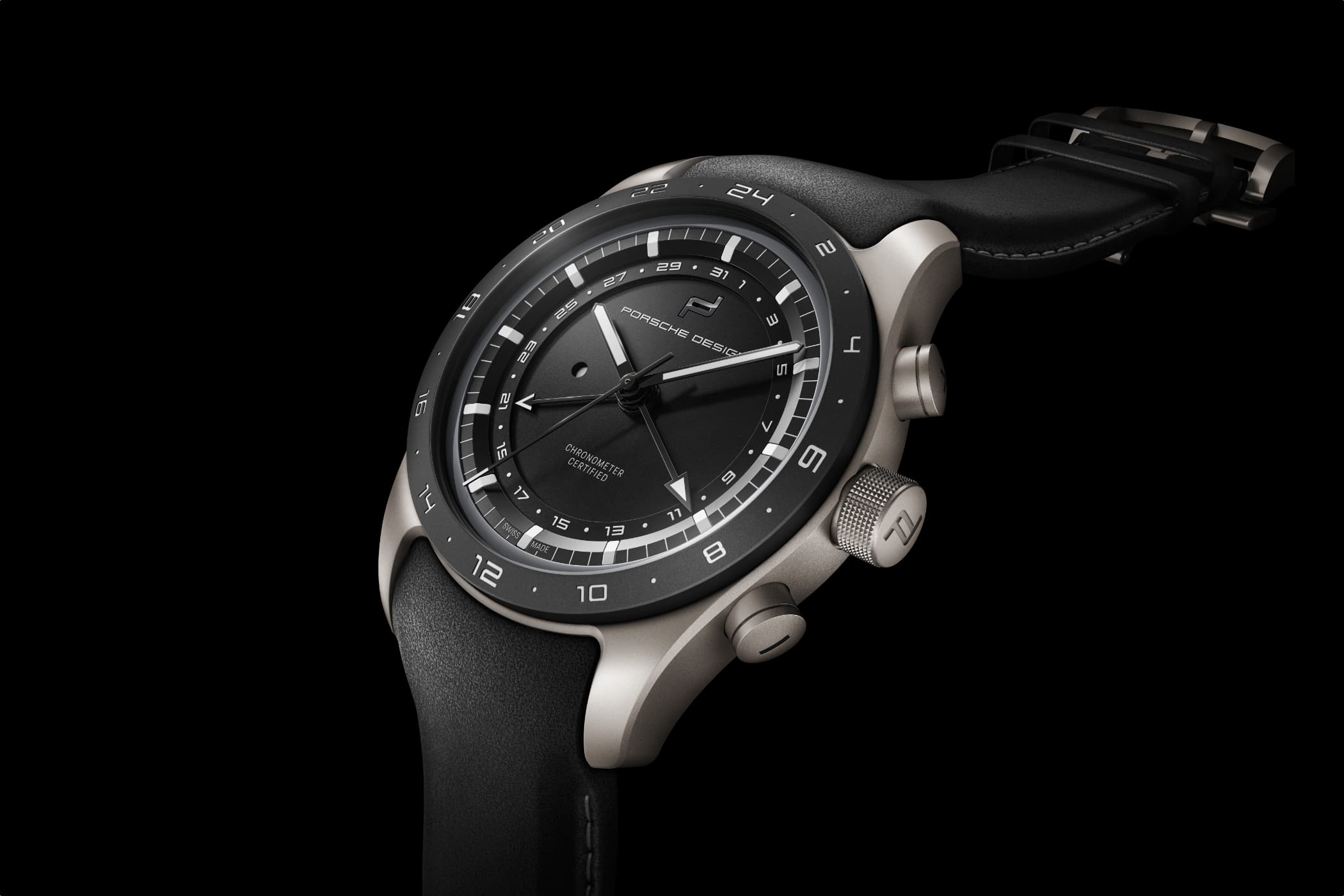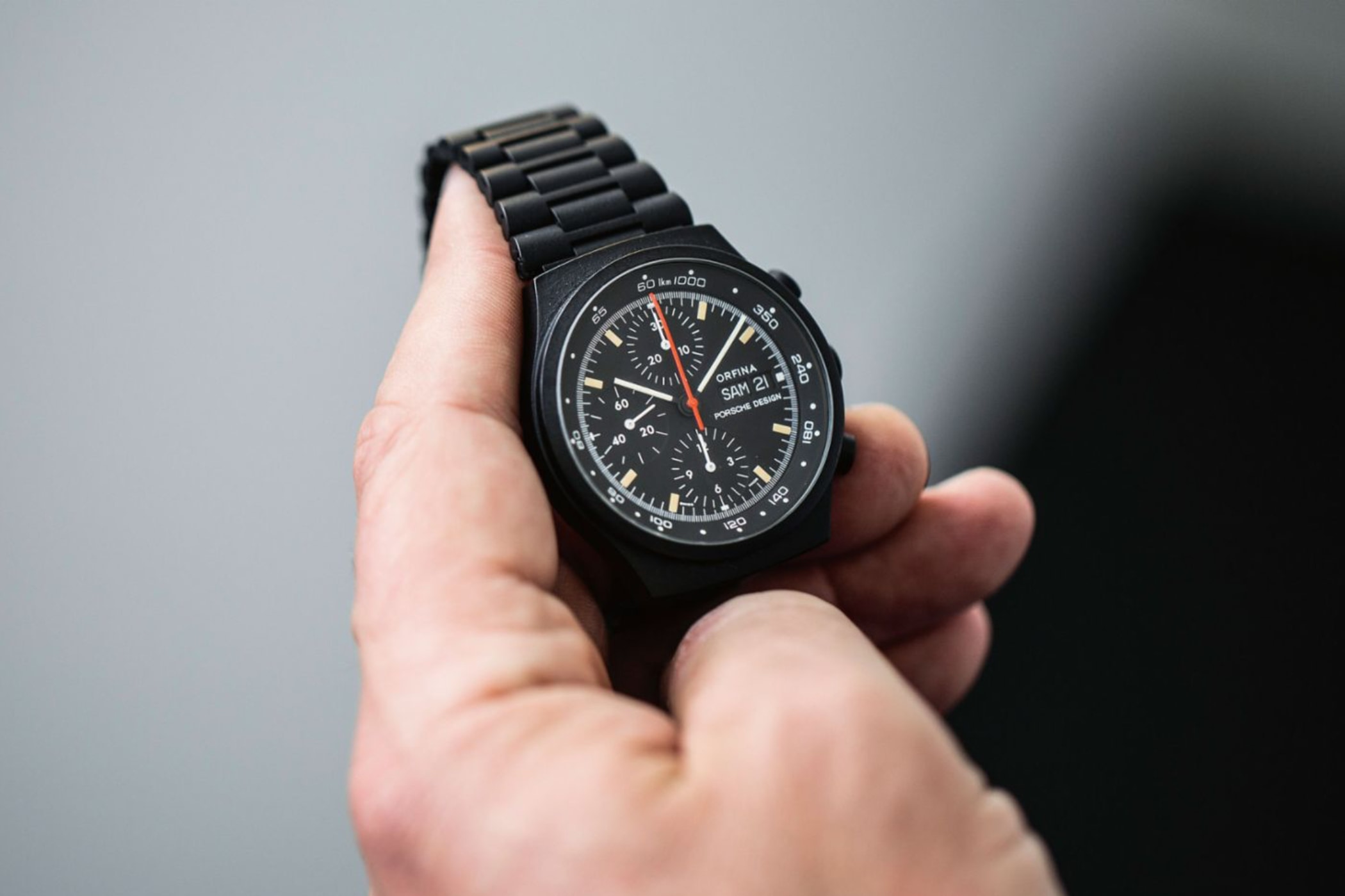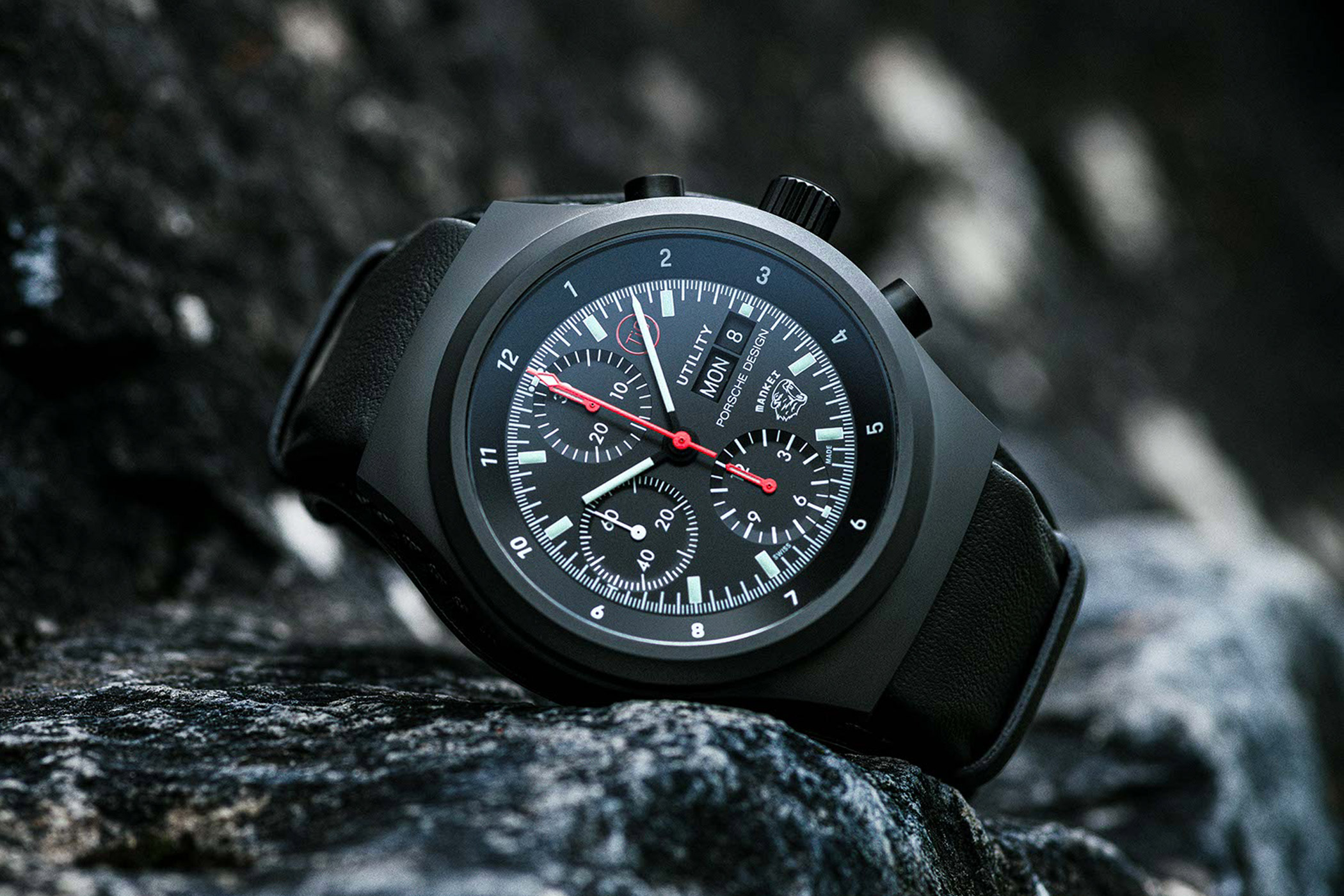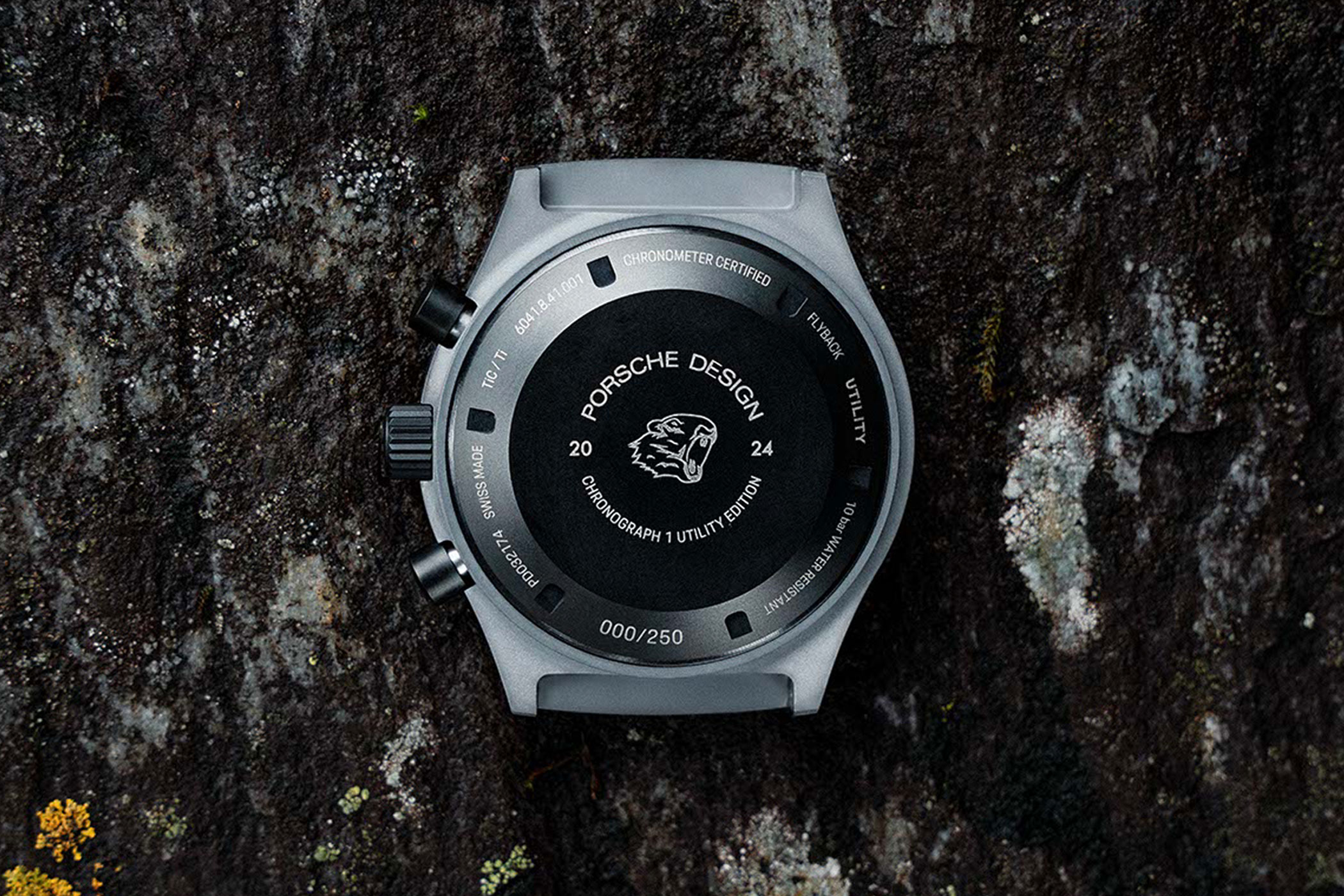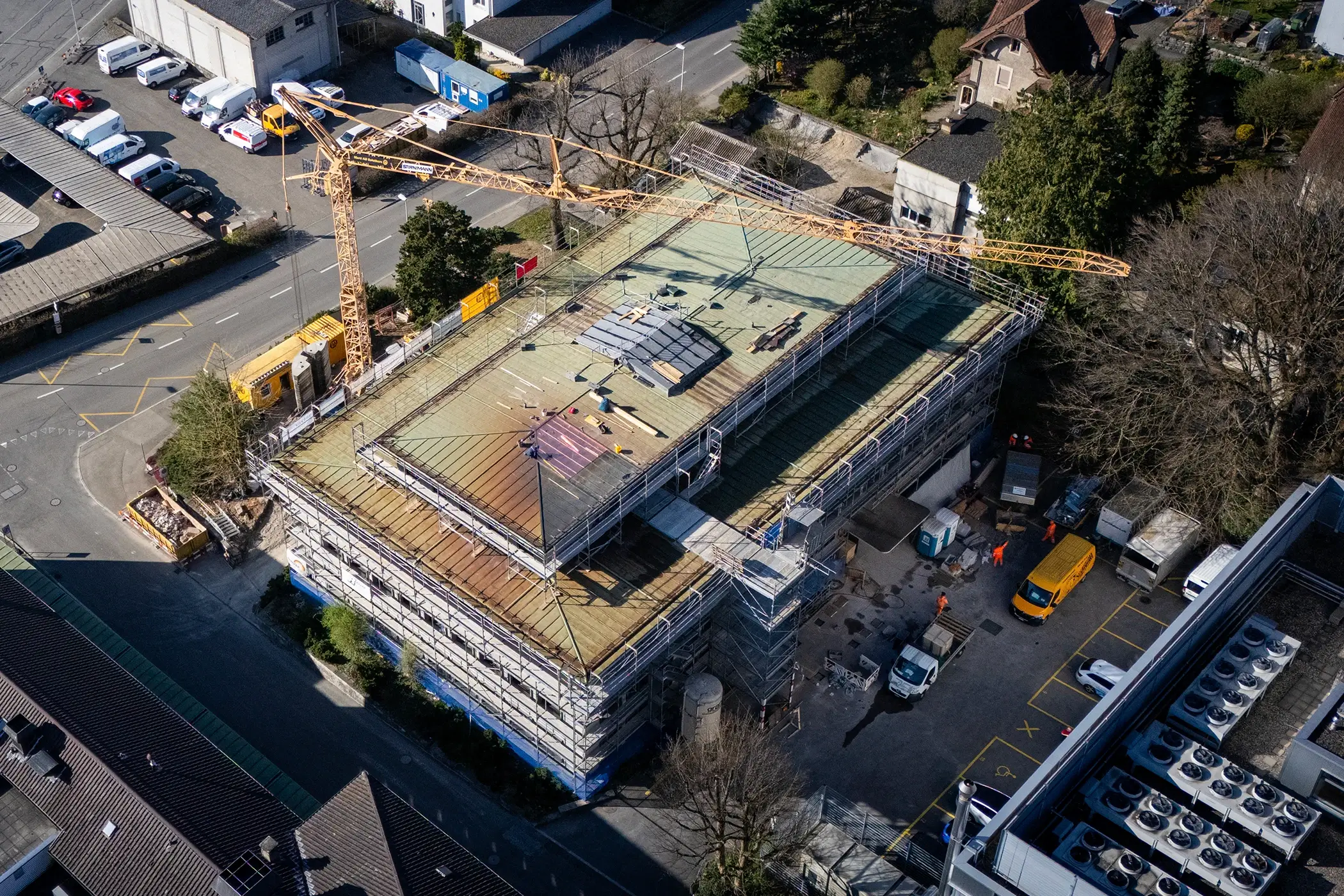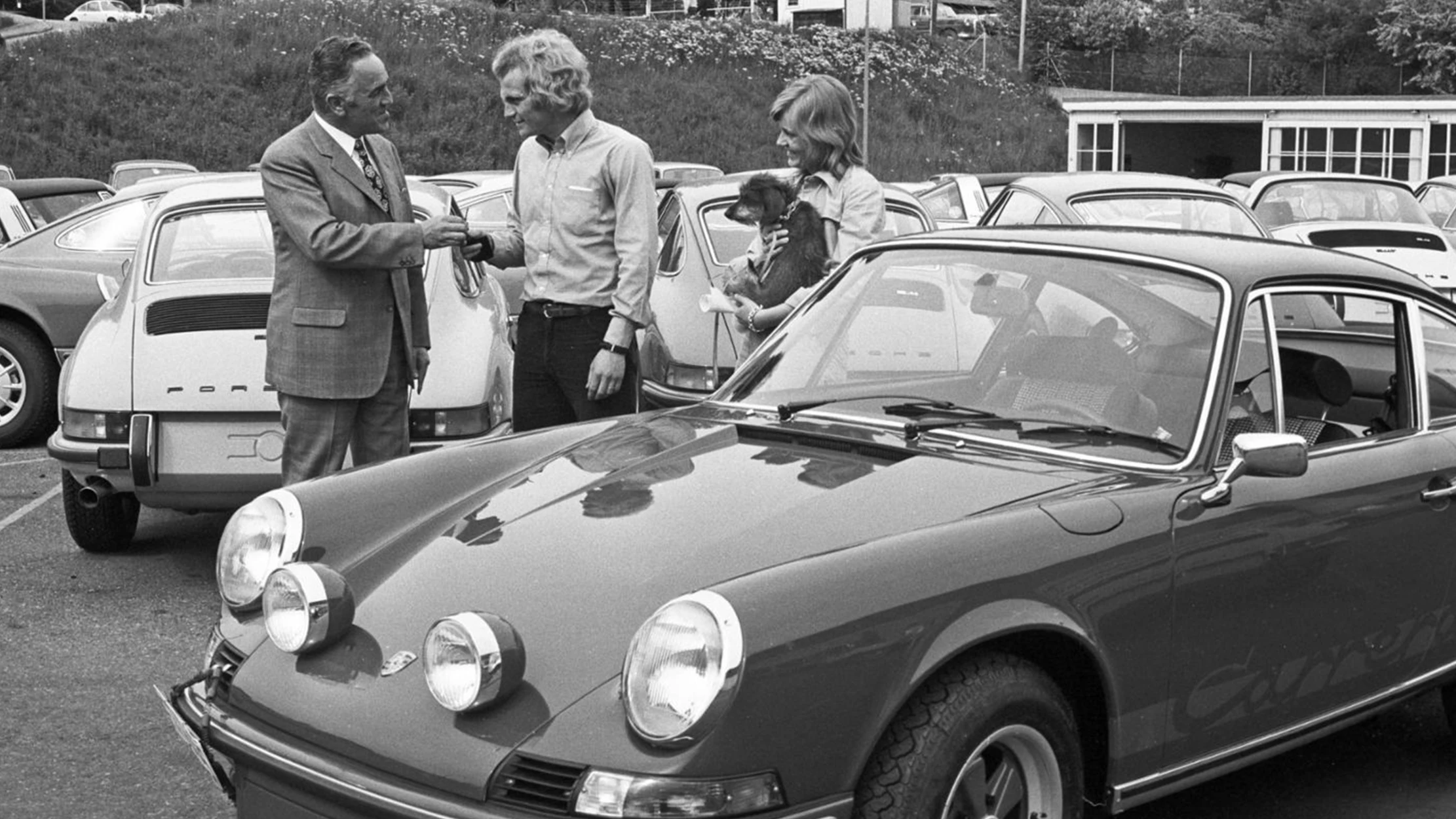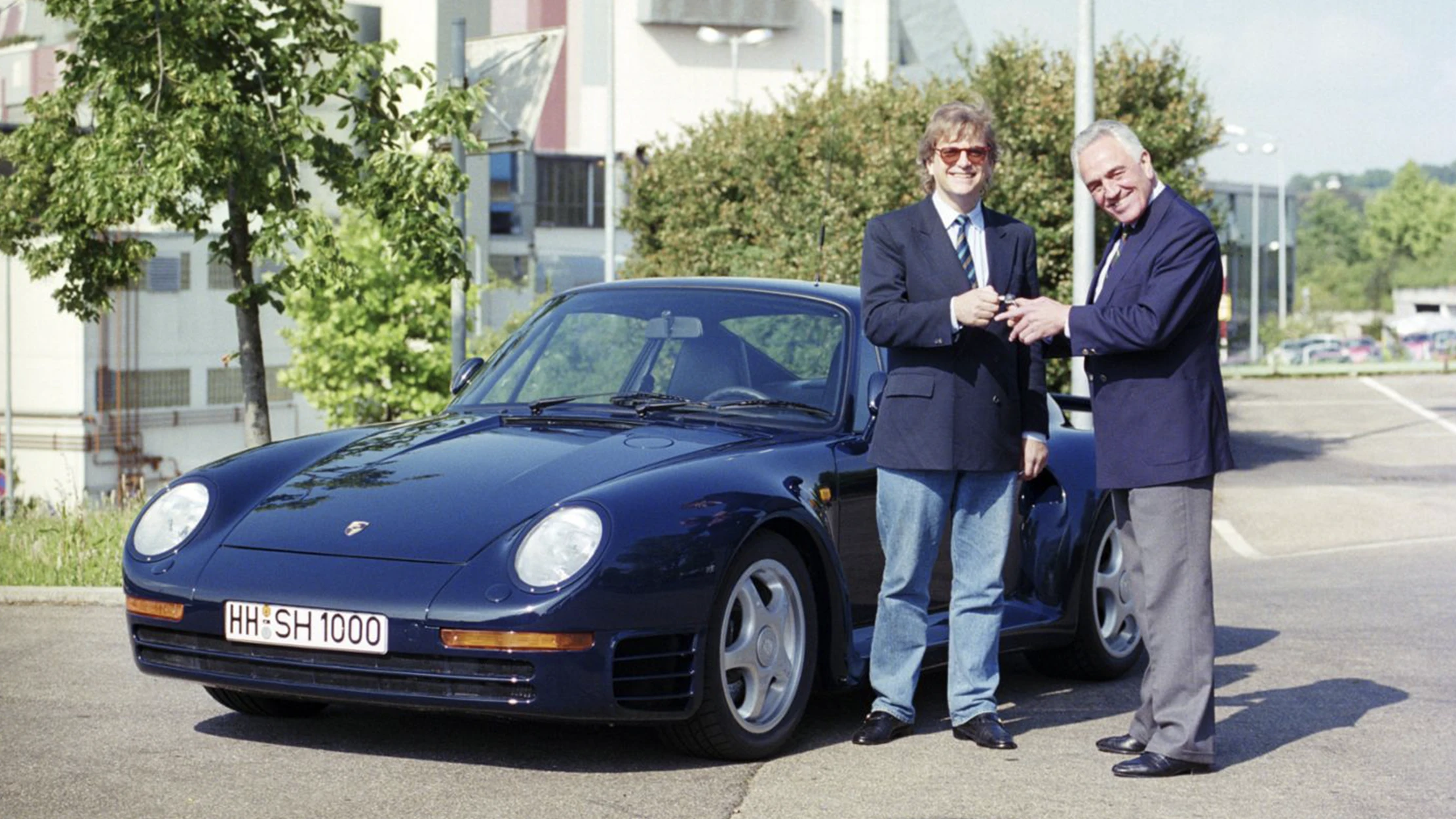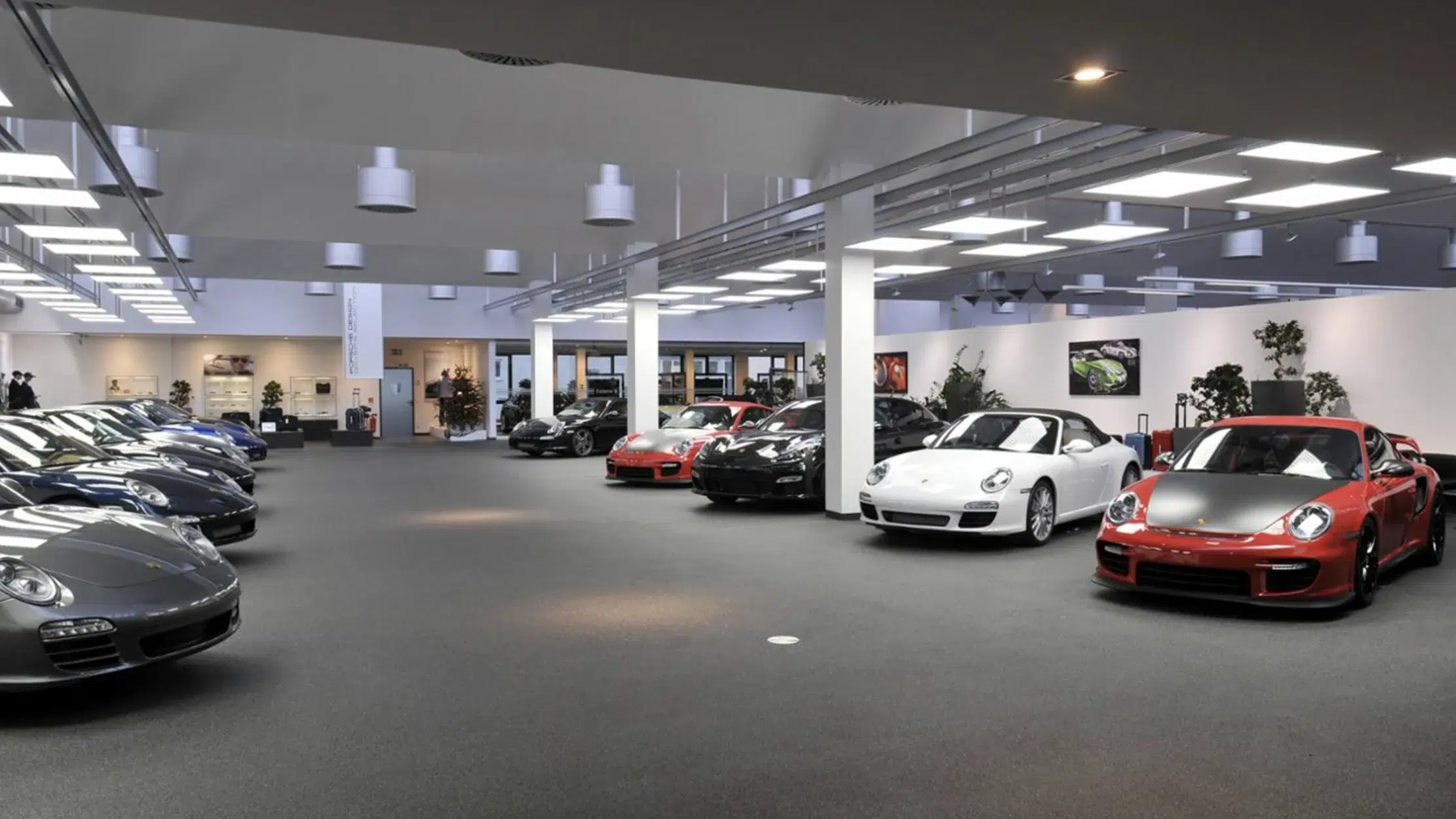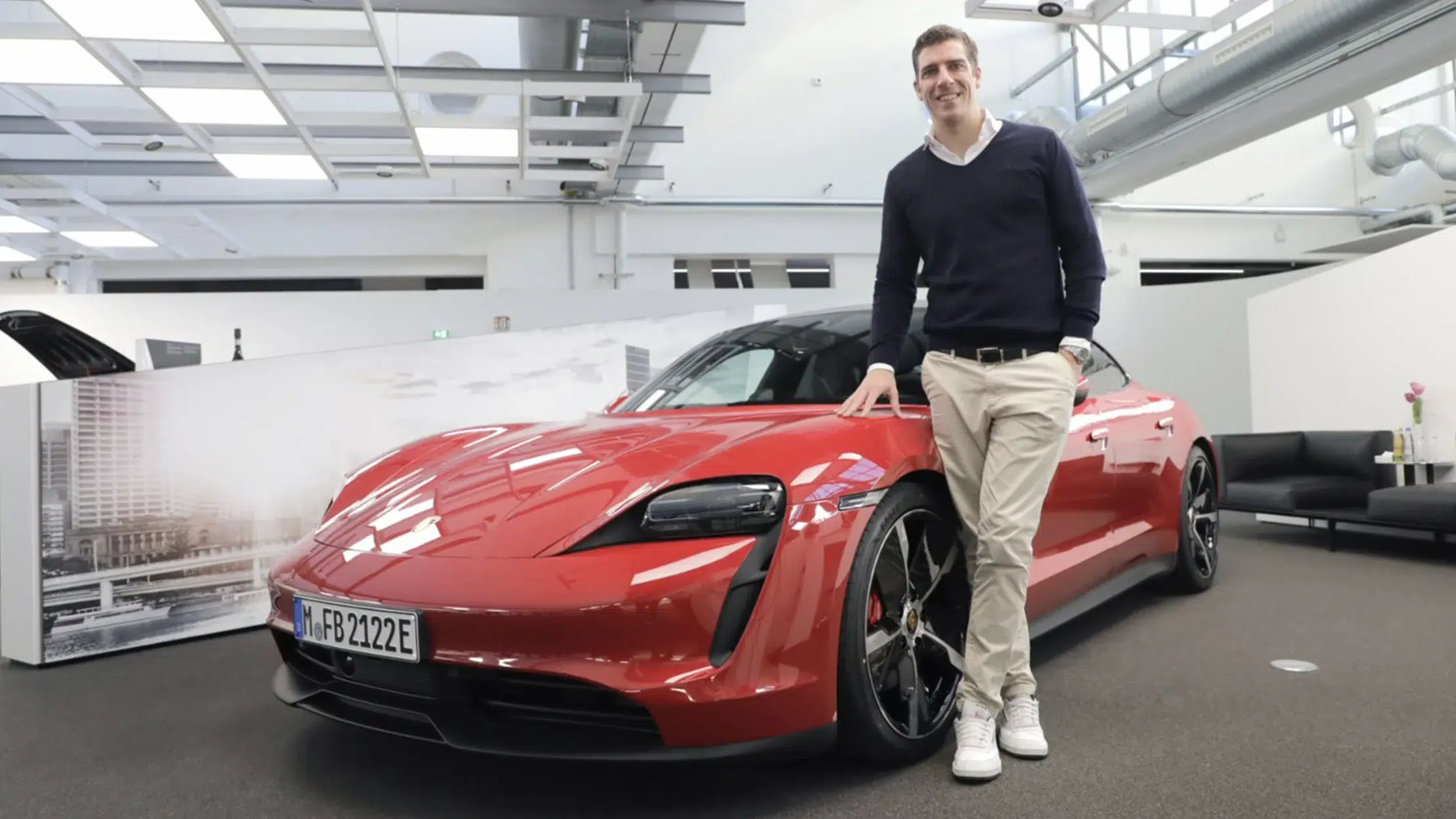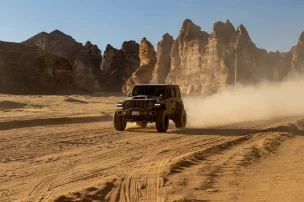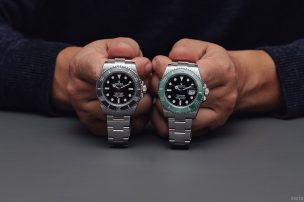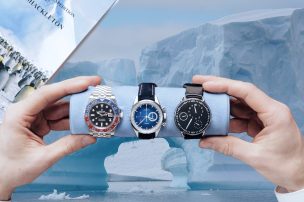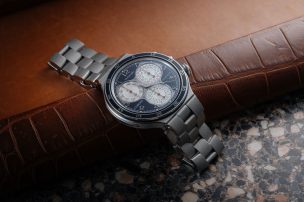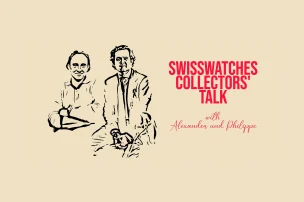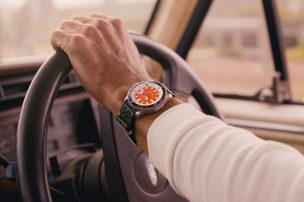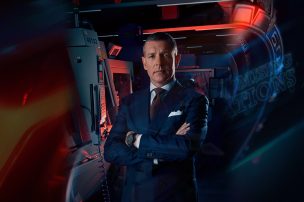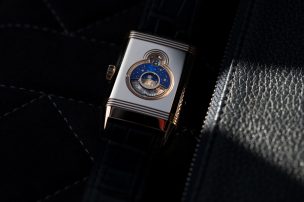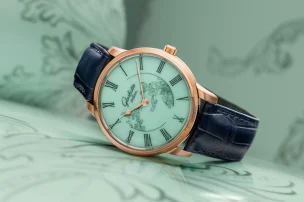

Porsche Design Watches: 10 Reasons Why Collectors Should Take a Closer Look
We have 10 good reasons for you why Porsche Design watches already occupy a special position today – and will be even more sought-after in the future.
Are Porsche Design watches worth the investment? We reveal 10 compelling reasons why Porsche Design timepieces command special attention from collectors today, and why their value will only grow in the future.
1. Ferdinand Alexander Porsche: The Legendary Designer Behind the Porsche 911 and Porsche Design Timepieces
The founding story of most start-ups is one of struggle – and rarely do their founders enjoy global recognition from the outset. After all, why start a new company if fame has already been achieved? Yet Porsche Design was a clear exception.
When Professor Ferdinand Alexander Porsche founded the brand in 1972, he had already accomplished more than most industrial designers could dream of:
- Since 1962: Served as Chief Designer at Porsche.
- 1963: Created the legendary Porsche 911 (originally Porsche 901), first presented at the Frankfurt Motor Show.
- Legacy: Gifted the world one of the most iconic silhouettes in automotive history.
In the years that followed, he designed the first 911 Targa with a removable hardtop and the Porsche 904 racing car with its pioneering fibreglass body. His departure from automotive design came in 1972, when the Porsche family withdrew from the operational business of Porsche KG as the company was converted into a joint-stock corporation.
Although Ferdinand Alexander Porsche remained on the supervisory board, he established his own design studio together with his brother Hans-Peter in Stuttgart. Two years later, the brothers returned to their childhood home in Austria. Equipped with deep knowledge of automotive design and its technical complexities, F. A. Porsche was no newcomer to design – but rather a seasoned professional who began exploring new product categories, many of which were initially connected to the world of motorsports.
2. The Porsche Design Chronograph I: The World’s First All-Black Watch (1972)
Two years before Ferdinand Alexander Porsche was even able to establish his design studio in Zell am See, his hometown in Austria, he received what initially appeared to be a modest commission from the newly restructured Porsche AG: to design a wristwatch for long-serving employees of the company.
Originally, only around 20 pieces per year were planned – but demand quickly grew, and soon the watches were being sold through Porsche Design boutiques and dealerships. Although F. A. Porsche had a clear sense of his design principles, no one at the time could have foreseen that the watch, named Chronograph I, would become a defining symbol of the Porsche Design studio in Zell am See – and a classic of modern watch design.
Approaching the task with the same dedication he brought to car design, Porsche questioned existing conventions: ‘My aim was to create a watch that matched the car.’
Revolutionary Design Features of the Chronograph I
That statement perfectly captures what became the world’s first all-black production wristwatch. Just like the non-reflective dashboard of a Porsche 911, not only the dial but also the bezel, case, and bracelet were matte black.
Key design innovations included:
- All-black construction: Bezel, case, dial, and bracelet in matte black finish.
- High-contrast legibility: Black dial with white hands and red seconds hand.
- Function-first philosophy: Stripped of ornamentation, designed purely for performance.
- Racing pedigree: Appealed to professional racing drivers who needed split-second precision.
Celebrity Endorsements and Racing Heritage
As detailed in our Guide, the first examples of the Porsche Design Chronograph I began appearing on the wrists of prominent figures as early as 1974.
Notable Porsche Design Chronograph I wearers included:
- Mario Andretti: Future Formula 1 World Champion (reportedly bought two)
- Gianni Agnelli: Ferrari owner and Italian industrialist
- Niki Lauda: Racing legend
- Emerson Fittipaldi: Two-time F1 World Champion
- Ayrton Senna: Three-time F1 World Champion
As F. A. Porsche himself put it: ‘Form does not follow fashion. It is precisely the other way around.’
Today, black wristwatches have become an entire collecting category and a stylistic statement embraced by major Swiss manufacturers – yet their origins trace back to F. A. Porsche’s uncompromising approach to design.
3. Beyond Watches: The Complete Porsche Design Lifestyle Universe
Founded in 1972 and relocated to Zell am See, Austria, in 1974, the Porsche Design Studio evolved over the decades into both a serious watch manufacturer and the nucleus of a much broader brand universe. From the mid-1970s onwards, a growing range of products emerged.
Iconic Porsche Design Products
In 1978, expectations were modest, with plans to sell only a few thousand units of the new sunglasses model P‘8478. To date, however, several million examples of this first interchangeable-lens design have been produced.
Other creations soon followed – such as the P‘8479, whose single-lens design evoked the look of a ski goggle and later became iconic when worn by Yoko Ono, the artist and wife of John Lennon. Equally forward-thinking was the P‘5510 sneaker designed in collaboration with Adidas, featuring built-in suspension. Until his death in 2012, F. A. Porsche and his team continued to develop products defined by technical innovation without ever descending into gimmickry: tailored blazers for frequent drivers, lightweight luggage with exceptionally smooth wheels, coffee machines for Siemens, and kitchen knives for WMF. All of them were designed in line with F. A. Porsche’s guiding principle: ‘When you rethink the function of an object, its form sometimes creates itself.’
In 2011, Porsche Design launched its first smartphone in collaboration with BlackBerry, the P‘9981, followed by its first laptop, the Book One. Introduced in 2017, it was the world’s first notebook to combine the features of a convertible and a detachable device – its screen could be rotated 360 degrees or removed entirely. Today, one can even live in a Porsche Design environment: that same year, the Porsche Design Tower Miami opened its doors. The 60-storey residential building features a unique engineering highlight – a car lift that allows residents to drive directly into their apartments. The vehicle key also serves as the key to the home.
4. Who Makes Porsche Design Watches? The IWC Partnership Era and Technical Milestones
The world’s first black wristwatch, the Chronograph I, was initially produced by the Swiss company Orfina on behalf of Porsche Design – and it quickly became a success.
Military Adoption and the ‘Top Gun’ Connection
The early models were equipped with the Valjoux 7750 chronograph movement, later joined in the military versions by the robust Lemania 5100. Beyond the racetrack, the watch began a second career in the late 1970s.
Thanks to its functionality, outstanding legibility, and reliability, it was adopted by several armed forces, including the German Bundeswehr, the Swiss Army, and various military units in the United Arab Emirates. Several American air squadrons also commissioned customised versions, often featuring their squadron emblems on the dial or caseback. Eventually, the Chronograph I even appeared on the wrist of actor Tom Cruise in the Hollywood blockbuster named after one such fighter squadron.
Fotocredit: bulangandsons.eu
The IWC Collaboration: Pioneering Titanium Watchmaking (1978-1997)
In 1978, Porsche Design began its collaboration with IWC Schaffhausen, producing groundbreaking timepieces with Swiss precision.
Their first joint project combined an anti-magnetic movement with a compass integrated into the hinged caseback: the so-called Compass Watch, known as IWC Reference 3511. For the first time, IWC and Porsche Design experimented with a material that was ideal for wristwatches yet notoriously difficult to machine: titanium.
This lightweight, saltwater-, acid-, and sweat-resistant metal became the focus again in 1980 with the Titanium Chronograph, the world’s first serially produced wristwatch made entirely from titanium. Today, all Porsche Design watches are crafted from this material. The model was also the first to feature chronograph pushers fully integrated into the case, a principle revived in 2017 with the Monobloc Actuator.
Over nearly two decades of collaboration – lasting until 1997 – many other models followed:
- the rare Chronograph II with an aluminium case and fibre-reinforced bracelet
- the Ocean 2000, water-resistant to 2,000 metres, and its sister model, the Ocean 500, resistant to 500 metres
- the minimalist SL and Ultra-Sportivo lines, whose innovative rubber straps would later inspire early Hublot designs
The Eterna Era: The Indicator P’6910 (1996-2011)
When the Porsche Holding acquired Eterna in 1996, the inventor of the ball-bearing-mounted rotor, the brand produced further milestones in watchmaking.
Among them was the 2004 P‘6910 Indicator:
- Innovation: first mechanical chronograph to display elapsed time digitally
- Complexity: over 800 individual components
- Design inspiration: Porsche Carrera GT (pedal-inspired pushers, wheel-inspired rotor)
- Historical significance: first watch to feature automotive wheel design on the rotor
- Price: 110,000 euros (2007 retail price), the most expensive Porsche Design watch ever produced
When Eterna was sold to a Chinese company in 2011, the partnership with Porsche Design gradually came to an end.
5. Who Makes Porsche Design Watches Today? The In-House Timepieces Manufacture
In 2015, the Porsche Design Studio in Zell am See – where all designs are still approved today – was renamed Studio F. A. Porsche in honour of its founder, who passed away in 2012. Since 2017, Porsche Design has once again been fully owned by Porsche AG, after the automotive group acquired the remaining privately held shares.
Porsche Design Timepieces AG: Switzerland’s Newest Manufacture (2014)
For watch collectors, however, the more significant milestone came in 2014 with the founding of Porsche Design Timepieces AG in Solothurn, Switzerland.
This makes Porsche the only car manufacturer to operate its own Swiss watchmaking facility, pursuing two key strategies under the concept of the ‘sports car on the wrist.’:
- Limited-Edition Watches: exclusively linked to limited or high-performance Porsche car models
- Custom-built Timepieces: the world’s first fully configurable wristwatch, analogous to Porsche’s car configurator system
The headquarters are located at the heart of Switzerland’s watchmaking supply triangle, surrounded by highly specialised manufacturing partners.
6. Exclusive Limited Editions: Porsche Watches Made Only for Porsche Car Owners (Since 2017)
Many serious watch collectors dream of owning their own reference within a brand’s catalogue. At Porsche Design, that dream comes unusually close to reality.
With the launch of the Chronograph 911 Turbo S Exclusive Series in 2017, Porsche Design entered new territory as the only car manufacturer with its own Swiss watch manufacture.
How Porsche Design Limited Editions Work
- Matching production numbers: Watches produced in exactly the same limited quantity as the corresponding car.
- Exclusivity: Reserved exclusively for buyers of the specific car model.
- Availability: Both original and subsequent car owners can order a watch later if not initially purchased.
- Take rate: Approximately 50 per cent of limited-edition car buyers order the matching watch.
- Multiple variants: Different design packages = different watch versions.
Porsche goes one step further: certain car models offer multiple design packages that are reflected in the corresponding watches.
Notable Limited Edition Examples
The 2022 Dakar Chronograph, for instance, was released both in the striking Rallye Design (Rothmans) and in a standard version. Similarly, the final 718 Spyder RS with a combustion engine offers a Weissach Package – a performance specification that also extends to the design of the watch.
Each of these versions differs in its details, meaning that there is never just one watch per car model, but rather several customised variants that may differ from the official press images. Since 2018, a total of 18 such models have been created, the most recent being the Chronograph 911 Spirit 70 – inspired by the heritage-themed Porsche model of the same name.
7. Porsche Watch Configurator: The World’s Only Fully Customizable Swiss Watch (Since 2020)
Over the decades, the Porsche Design team has repeatedly drawn inspiration from details and principles of sports car engineering.
Examples of automotive-inspired watch innovations include:
- Pipe design, modelled on engine block cooling fins.
- 1919 Globetimer UTC: Time-zone adjustment mechanism is inspired by dual-clutch transmission system.
- Monobloc Actuator (2017): Integrated chronograph pushers mirror the rocker-arm system used for valve control in the Porsche RSR racing engine.
Since the founding of the watch manufacture in Solothurn in 2014, Porsche Design has pursued one particularly ambitious goal: not only to transfer the design philosophy of its sports cars to wristwatches, but also to apply the same principles of highly customisable production.
How the Porsche Watch Configurator Works
Through the online Porsche watch configurator – which appears directly after selecting a car model – customers can assemble their personal Porsche timepiece from millions of possible combinations.
Customisation Options Matching Your Porsche:
- Colours match original Porsche paint tones of configured vehicle.
- Leather straps correspond exactly to car interior leather.
- Decorative stitching matches car interior stitching.
- Winding rotor replicates customer’s chosen wheel rim design in detail.
To offer a fully individualised wristwatch with virtually endless configuration options, Porsche Design had to rethink and adapt the traditional watchmaking process. Colours, materials, and design elements are now planned years in advance alongside vehicle development to ensure that each new car launch coincides with a matching timepiece.
This seamless integration of automotive and horological design makes every Porsche Design watch a true extension of the brand’s engineering philosophy:
- Made-to-order production: Every component produced individually only after an order is placed.
- Swiss suppliers: Exclusively sourced from Swiss watchmaking partners.
- Hand assembly: Assembled at Porsche Design’s Solothurn manufacture.
- Sustainable: Zero waste thanks to made-to-order principle.
Custom-built Timepieces Programme Extension
Initially, the custom-built programme allowed collectors to configure chronographs exclusively for 911 models. In 2024, the offering expanded to include a world-time model for the first time: the UTC Globetimer.
Today, the custom-built Timepieces programme is available in:
- Germany, Austria, Switzerland, Poland
- France, Spain, Portugal
- United Kingdom
- United States, Canada
- Japan
In the coming years, further markets are to follow. In addition to the web-based configurator, customers can also design and order their watch at participating Porsche Centres. And naturally, Porsche enthusiasts who do not (yet) own a car can also purchase one of these Porsche Design timepieces – or, for existing owners, configure a watch for their vehicle at a later stage.
8. Porsche Design Titanium Watch Innovation: Like Rolex, Continuous Technical Evolution
Some collectors might object to the comparison – after all, Rolex stands at the pinnacle of mechanical watchmaking, known for its uncompromising quality. Yet that reputation rests on one fundamental principle: a constant commitment to improving its products rather than resting on past achievements.
Porsche Design has followed the same philosophy since its foundation in 1972. A prime example is the evolution of case materials in Porsche Design watches.
Material Evolution: From Black Coated Steel to Titanium Carbide
Porsche Design’s evolution in material technology illustrates its approach clearly. In 2022, the brand celebrated its 50th anniversary, which also marked fifty years since the launch of the first black wristwatch, the Chronograph I. Like the original, the new anniversary model was presented in a black case, but unlike the 1972 Orfina models in black-coated stainless steel, it was crafted from lightweight titanium.
The original coating on those early steel cases tended to wear off over time, particularly along the edges. By contrast, the titanium watches introduced from 1980 onwards steadily advanced Porsche Design’s material expertise. Following the 2022 relaunch, all black titanium models were equipped with an especially scratch-resistant titanium carbide coating. In parallel, the manufacture began experimenting with an even more ambitious step: producing an entire case made from the same material. First introduced in 2023 as a limited-edition Chronograph 1 – 911 Dakar for buyers of the off-road 911 model, the Chronograph 1 Utility – Limited Edition, launched in 2024, features a case made entirely of ceramic-based titanium carbide (with the crown and pushers still in titanium).
Titanium Carbide: Engineering Breakthrough
Titanium carbide, a fine powder pressed and ‘baked’ in a multi-stage process at around 2,000 degrees Celsius before being milled and polished, combines remarkable lightness with extreme hardness and scratch resistance. However, due to its brittleness, it can only be machined using diamond tools.
Undeterred, Porsche Design’s engineers developed a new inner construction for the Chronograph 1 Utility Limited Edition:
- Outer shell: durable titanium carbide
- Inner container: watertight titanium (enlarged by 2 mm in diameter)
- Water resistance: 100 metres
9. Counter-Cyclical Investment: New Porsche Design Manufacture During Industry Downturn
While Swiss watchmakers are facing challenging times in the aftermath of the post-Covid boom, the situation pales in comparison to the profound transformation currently reshaping the global automotive industry. The shift affects all brands with deep roots in combustion-engine production.
Against this backdrop, it is far from self-evident that Porsche continues to invest heavily in its Porsche Design Timepieces division. Many manufacturers would likely abandon such non-core segments – but not Porsche.
The Grenchen Expansion: A Bold Move (2024-2025)
In June 2024, Porsche Design announced the acquisition of a new facility for its watch manufacture in Grenchen, Switzerland:
- Location: near existing Solothurn production site
- Historical significance: former Eterna workshops (Porsche Design’s partner 1996-2011)
- Timeline: first employees moved in summer 2025
- Official opening: planned for spring 2026
After more than a decade of operating its own assembly line, Porsche’s decision marks another clear commitment to the long-term development of Porsche Design as a watch manufacturer.
Production Capacity and Future Growth Potential
Industry experts estimate the current annual production to be at around 5,000 timepieces. However, with the continued success of the custom-built Timepieces programme, capacity limits are already on the horizon – even if car sales were to soften. For now, these watches are offered only for the 911 series and not yet across all markets.
Should customers of Porsche’s high-volume model lines, such as the Cayenne and Macan, be granted access to the programme in the future, manufacturing capacity in Switzerland would need to expand significantly.
For context: in 2024 Porsche delivered approximately 300,000 vehicles worldwide, including about 50,000 units of the 911, for which customers can currently configure bespoke Chronograph or Globetimer models. By comparison, around 100,000 Cayennes and 83,000 Macans were produced in the same year.
Given the sheer scale of potential variants – running into millions – and the increasing demand for service as the client base expands, Porsche Design’s strategy of planning counter-cyclically and investing in production capacity well ahead of time is not just visionary but vital for long-term sustainability.
10. The Ultimate Experience: Factory Collection for Both Your Porsche Car and Porsche Wrist Watch
As thrilling as it may be to watch Formula 1 cars and wear the timepiece of a major sponsor, true emotion arises when you experience something with your own watch in your own sports car.
Since the 1960s, the term factory delivery has held special meaning for Porsche enthusiasts around the world:
- Daily collections: Around 25 people collect their new Porsche directly from Stuttgart plant each day.
- International appeal: Visitors are eager to experience German autobahn driving.
- Museum integration: Since 2009, factory delivery evolved into complete brand experience.
The Future: Watch Manufacture Tours and Collection Events
So why should that not extend to men’s Porsche watches, especially at a time when many Swiss manufactures are offering elaborate factory tours to help customers engage more deeply with their timepieces?
Those who read the announcement about Porsche Design Timepieces AG’s new headquarters closely will have noticed that, alongside additional space for watchmakers, the new building will include dedicated event areas.
Imagine not only collecting your Porsche 911 in Zuffenhausen, but a few days later, after a scenic drive through the Alps, picking up your custom-built wristwatch at Porsche’s own watch manufacture in Switzerland. Perhaps you arrive in your car with the matching Roadster Aluminium Trolley in the boot and a pair of Porsche Design P‘8994 sunglasses – perfectly coordinated with your new watch.
For Porsche and Porsche Design enthusiasts, the idea of driving to collect a Porsche wristwatch may be the ultimate experience. Those who enjoy such moments should stay tuned with Swisswatches – the official inauguration of the new facility is planned for spring 2026.
